Descending from the first pass in the Asterousia Mountains into a smallish, but noticeably fertile valley, we arrived at a spacious parking lot and restaurant along the main road in a place called Amigdalos.
My first association with the name of this place was the amygdale, a part of the human brain associated with emotional processes. But that’s just because I don’t speak Greek. The Greek word that is the basis of the name for this part of the brain is αμύγδαλο (amýgdalo), meaning “almond,” because that part of the brain is shaped like an almond.
However, I believe that when this place in the Asterousia Mountains was named, nobody was concerned with its shape or parts of the brain, but it seems logical to conclude that there are plenty of almonds growing there.
However, my own amygdale was highly activated in this place, as I was joyful and content. We all socialised nicely and cheerfully, while the restaurant owner, a young man, was exceptionally kind, pleasant and talkative. When he heard that we were going birdwatching, he gave us some directions (although Saša and Ljilja had been here before), as evidently, bird researchers from Crete often stop by, so he knew very well where the feeding area was and where to wait for bird observation. Additionally, our conversation turned to personal topics and he mentioned that he would like to get married, but to a traditional young woman and even asked me if I had a daughter. Unfortunately, I do not, but there were a couple of members in the group who do have “daughters to marry off,” so it remained open to see what would happen over time regarding this topic... To start with, aside from various drinks, we all took some teas native to this area that can be purchased at the restaurant’s shop.
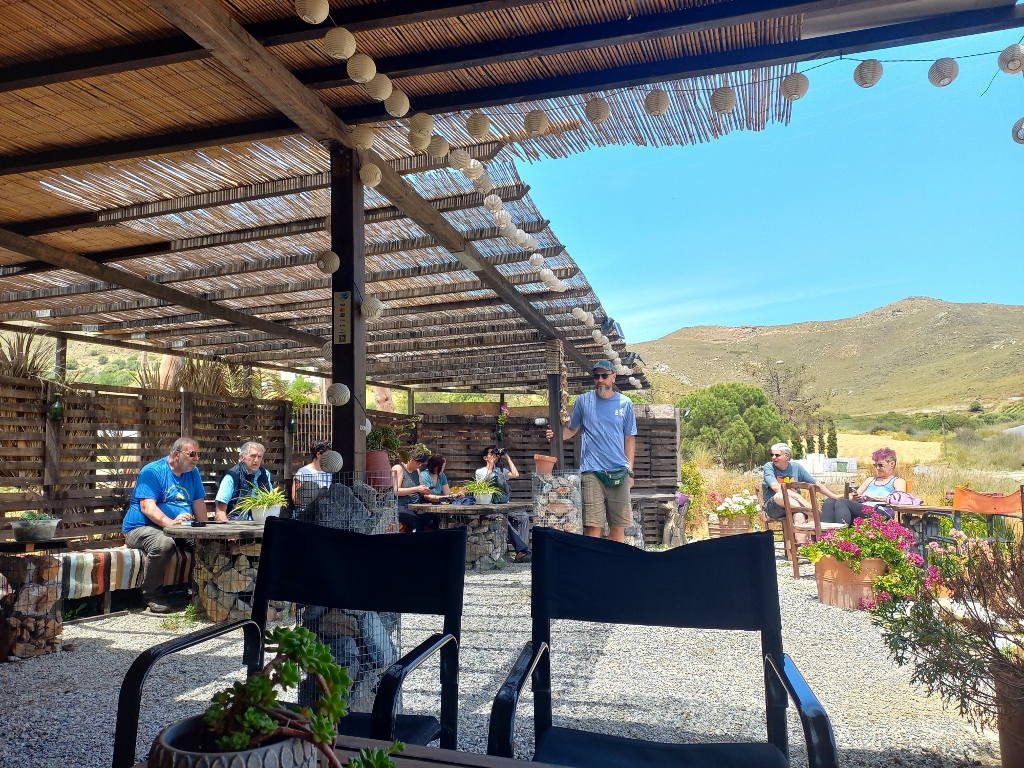 While Ljilja and I are sitting on a wooden sofa, we enjoyed the view at the restaurant’s terrace and other members of our group
While Ljilja and I are sitting on a wooden sofa, we enjoyed the view at the restaurant’s terrace and other members of our group
At some point, we resumed our trip and, following the directions, veered off the main road and onto a narrow side road, passing through the village of Paranimfi. Soon, this road turned into a dirt track leading up the mountain.
Although I was just following the other two cars and even though the car I was driving was rather high, I must admit I was under quite a bit of stress. It wasn’t a problem to drive; the car was going fine, but, if it were up to me, I would have driven significantly slower (although we weren’t speeding anyway). However, here, I didn’t want to fall too far behind the cars ahead of me. My biggest issue was, as I’ve mentioned earlier, that I have a “trauma” from driving on dirt roads, so that affected my state.
Be as it may, from time to time, where it was safe, I could still manage to take photos of what it was like to follow the cars on the dirt road in the Asterousia Mountains, as well as of what the road looked like in some places.
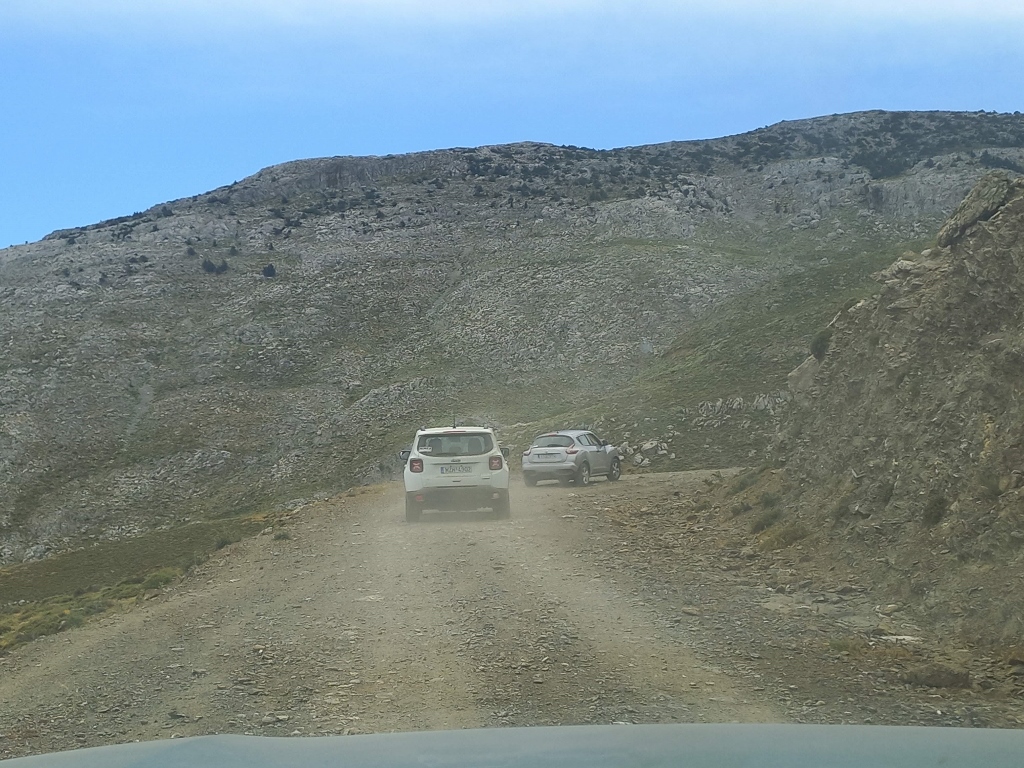 Ascending the Asterousia Mountains by car
Ascending the Asterousia Mountains by car
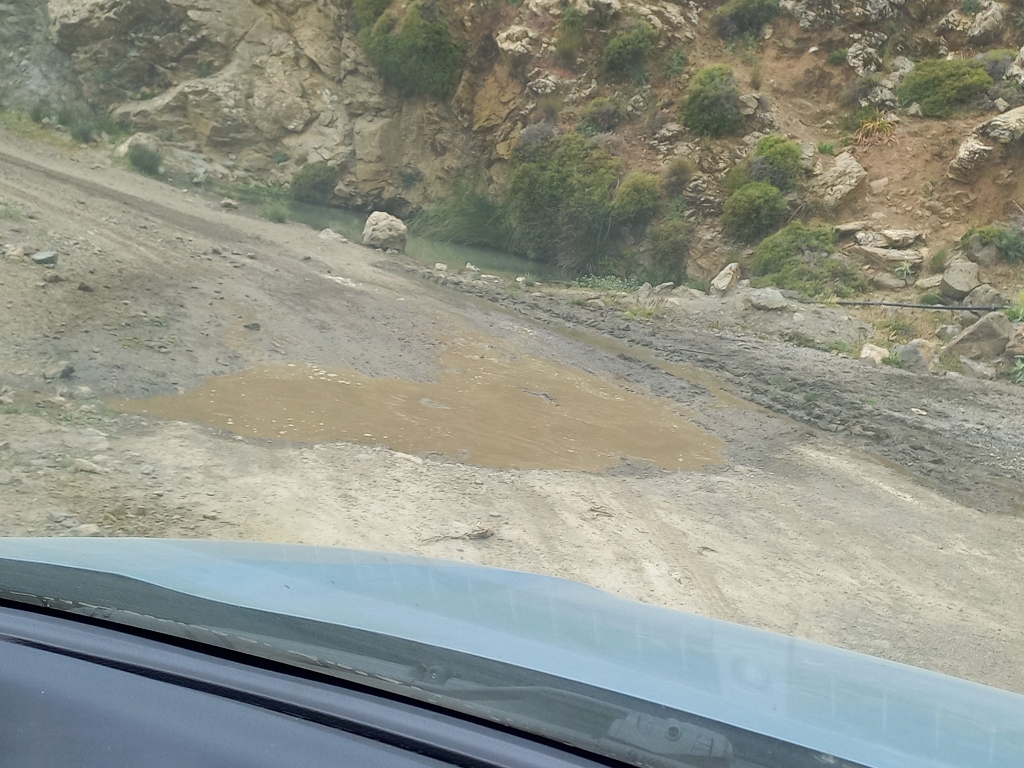 Ascending the Asterousia Mountains by car
Ascending the Asterousia Mountains by car
By chance, during this part of the journey, I managed to capture one of the relatively numerous goats we encountered along the way.
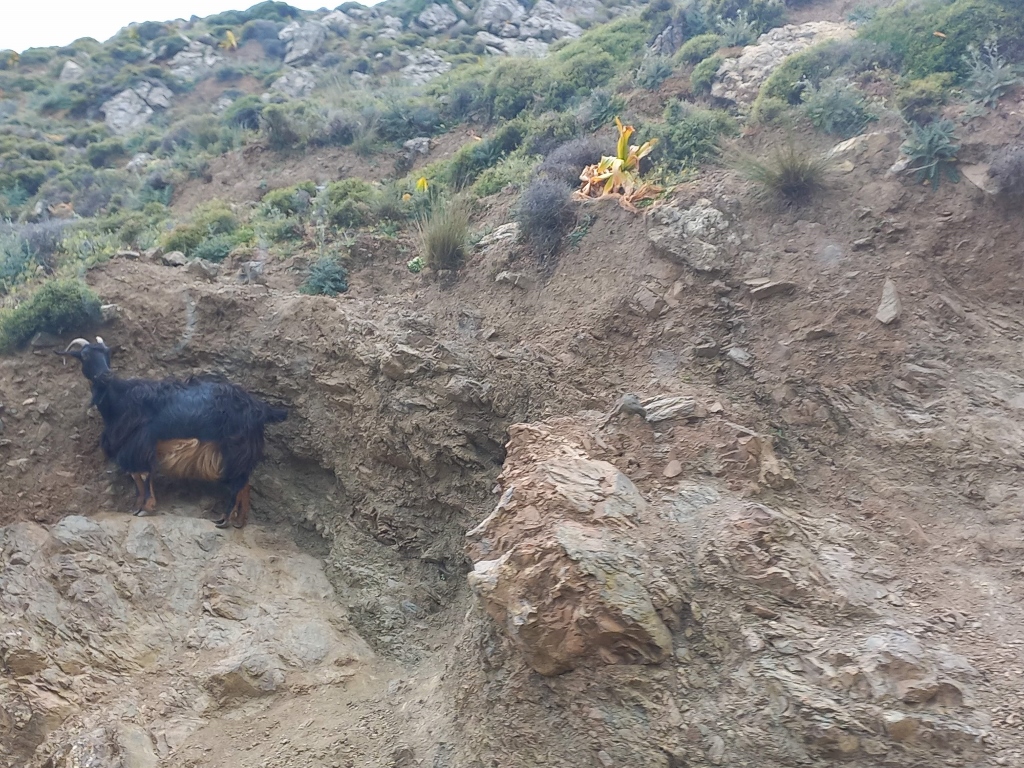 Sight by the road in the Asterousia Mountains
Sight by the road in the Asterousia Mountains
Although this part of the Asterousia Mountains may seem quite bare and even desolate, there are still occasional structures erected by humans, presumably used for agricultural purposes, hence the goats grazing around. By the way, I should mention that I took the next two photos while the car was standing still.
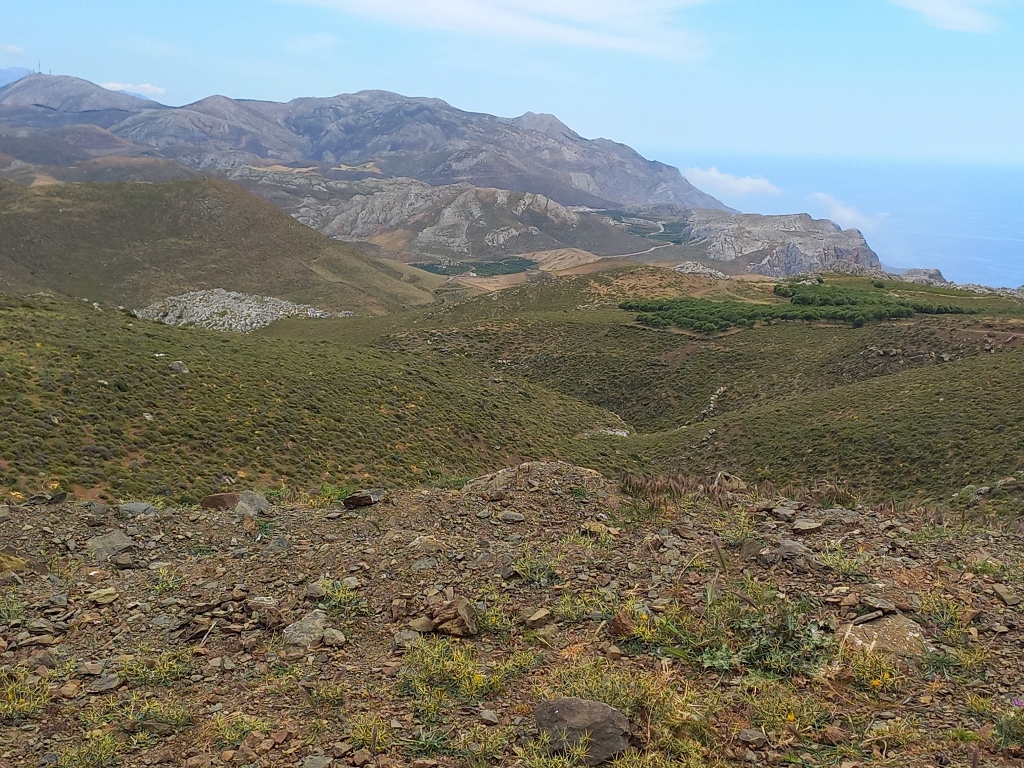 Asterousia Mountains, a detail
Asterousia Mountains, a detail
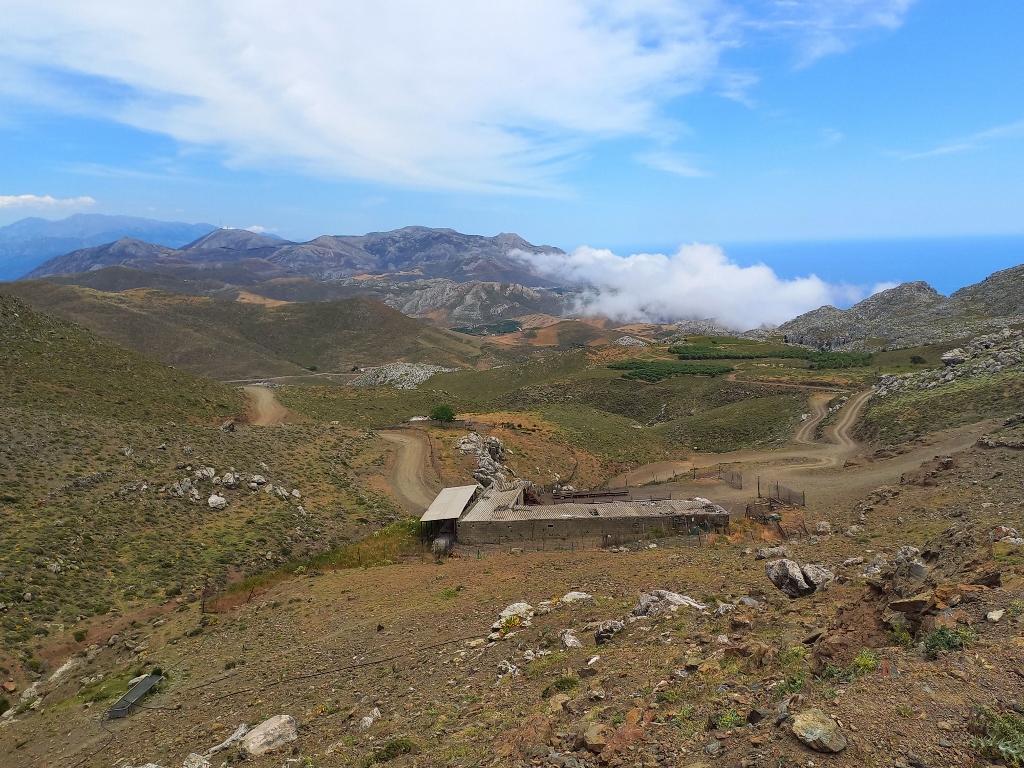 Asterousia Mountains, a detail
Asterousia Mountains, a detail
Along the way, we passed by a group of 3-4 motorcyclists who were here probably gearing up for some motocross activity. But apart from them, we didn’t encounter any other human beings in this part of the mountains.
When the road led us to a clearing, which was a sort of intersection, we decided to continue along one path that soon brought us to a pass. Then, we drove past by a wildlife observatory, primarily for birds. However, the road was quite narrow there, so we carried on, only to realise that it was now leading us down the southern slope of the mountain. Later, I found out that if we had continued, we would have reached a monastery on the coast.
However, we all stopped at a bend where there was enough space for the three cars, so we took a short break there to take photos and discuss our next steps. From there, we could also get a good view of the highest peak of the Asterousia Mountains – Kofinas, standing at 1231 m a.s.l.
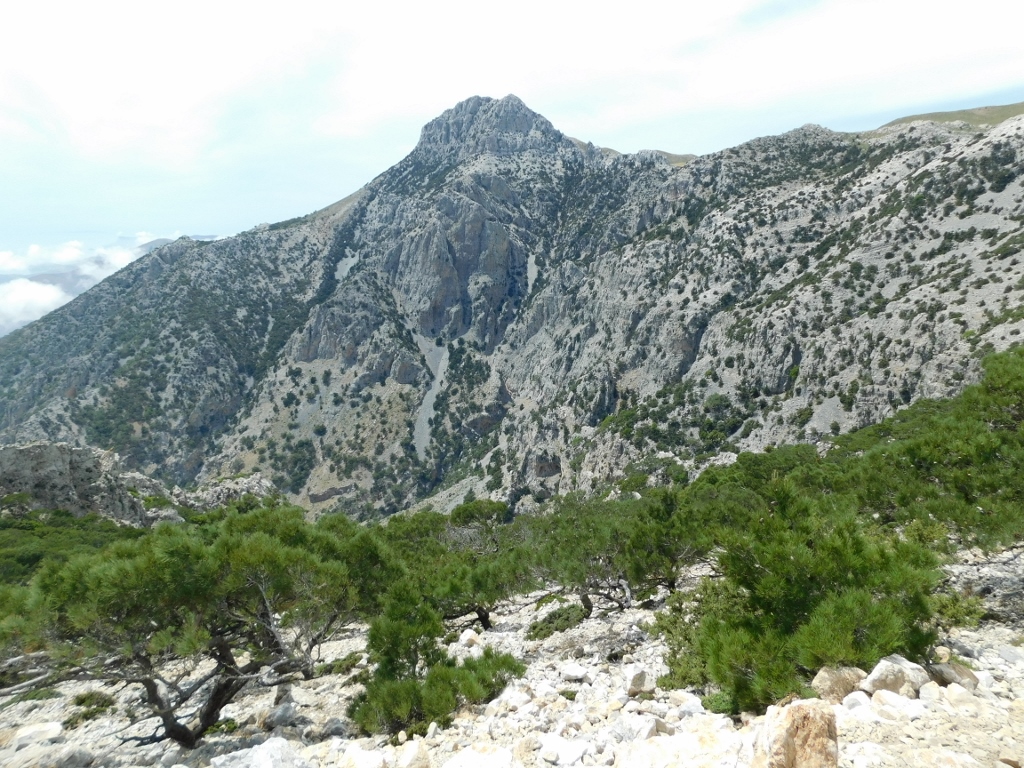 Asterousia Mountains, a detail
Asterousia Mountains, a detail
In addition, from there, we had a magnificent view of the Libyan Sea. It is said that under ideal weather conditions, you can even see the northern coast of Africa from here.
 View at the Libyan Sea
View at the Libyan Sea
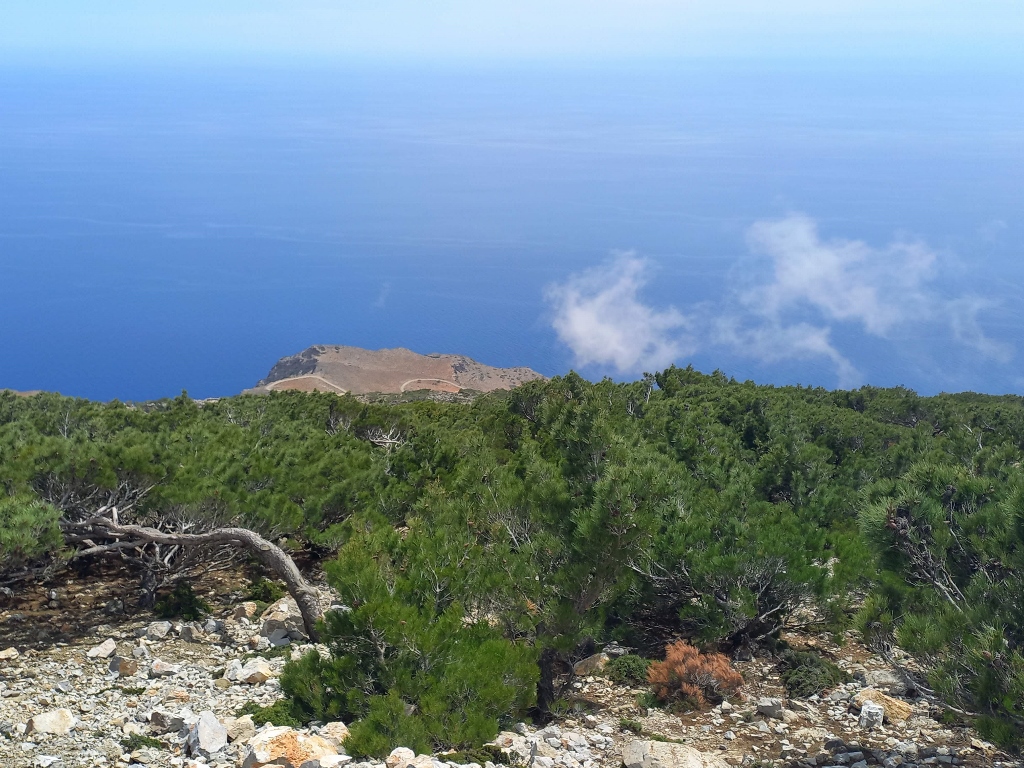 View at the Libyan Sea
View at the Libyan Sea
I couldn’t see the northern coast of Africa, but I enjoyed watching the southern parts of Crete, plus I also managed to take a photo of a griffon vulture (Gyps fulvus).
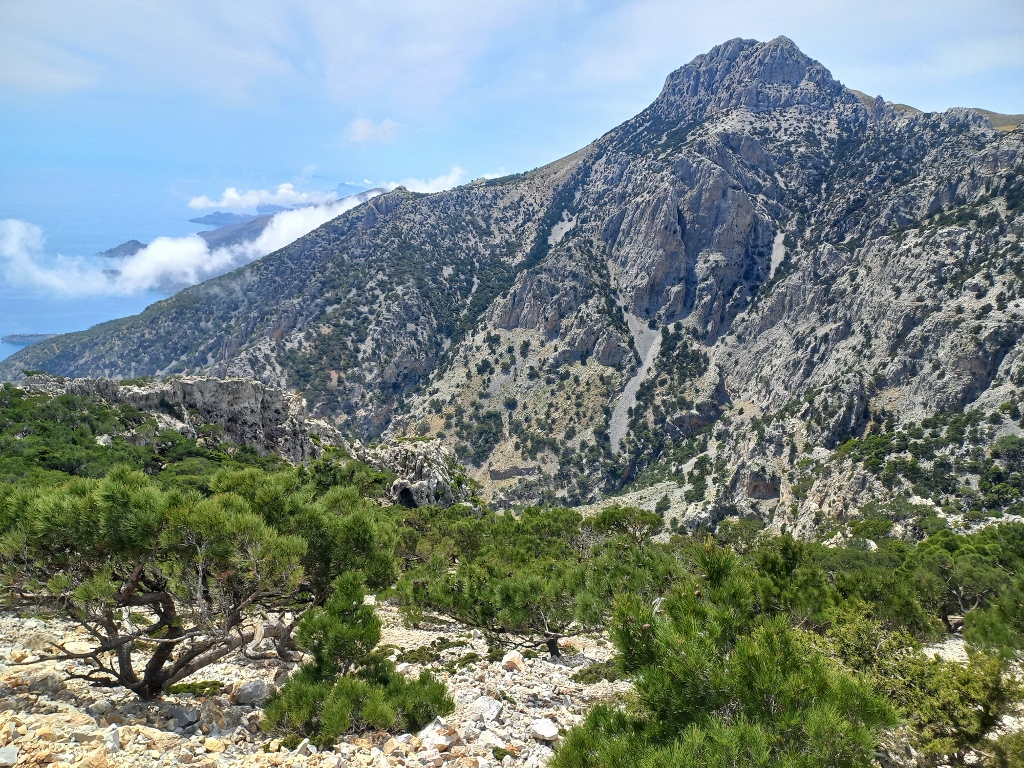 Asterousia Mountains, a detail
Asterousia Mountains, a detail
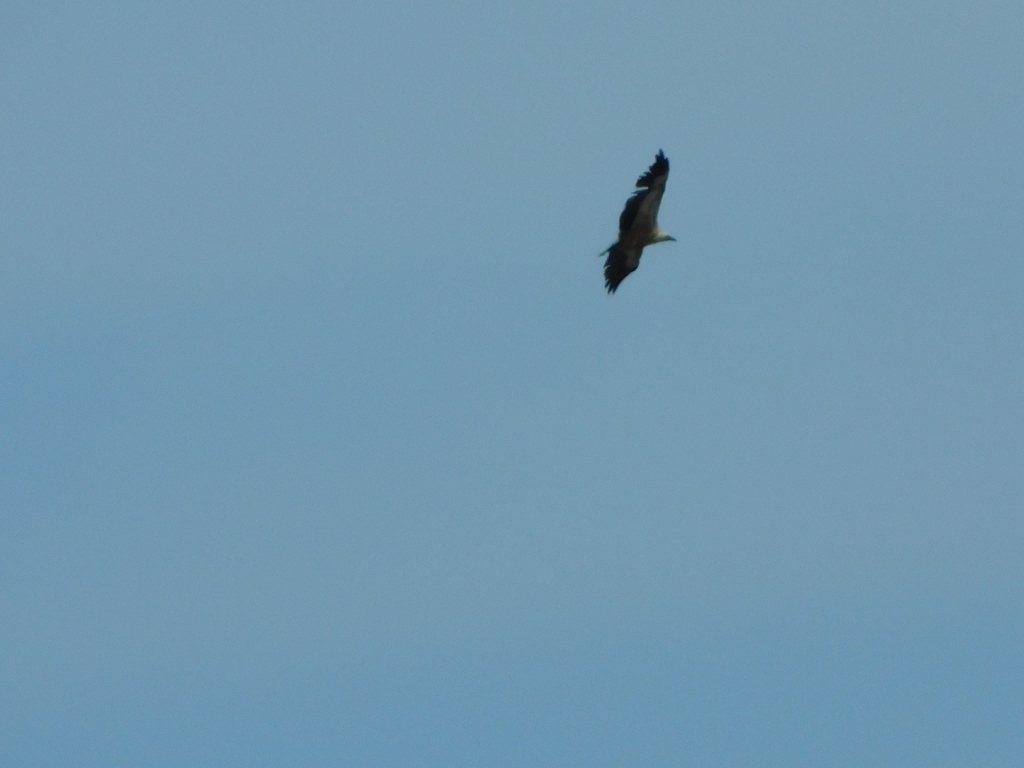 Griffon vulture
Griffon vulture
When we finished taking photos, we all slowly turned our cars around and started heading back. At one point, I still had to stop to take photos of some parts of the surroundings. On one side was the impressive peak of the Asterousia Mountains, Kofinas, while on the other there was the view from the Asterousia Mountains Pass.
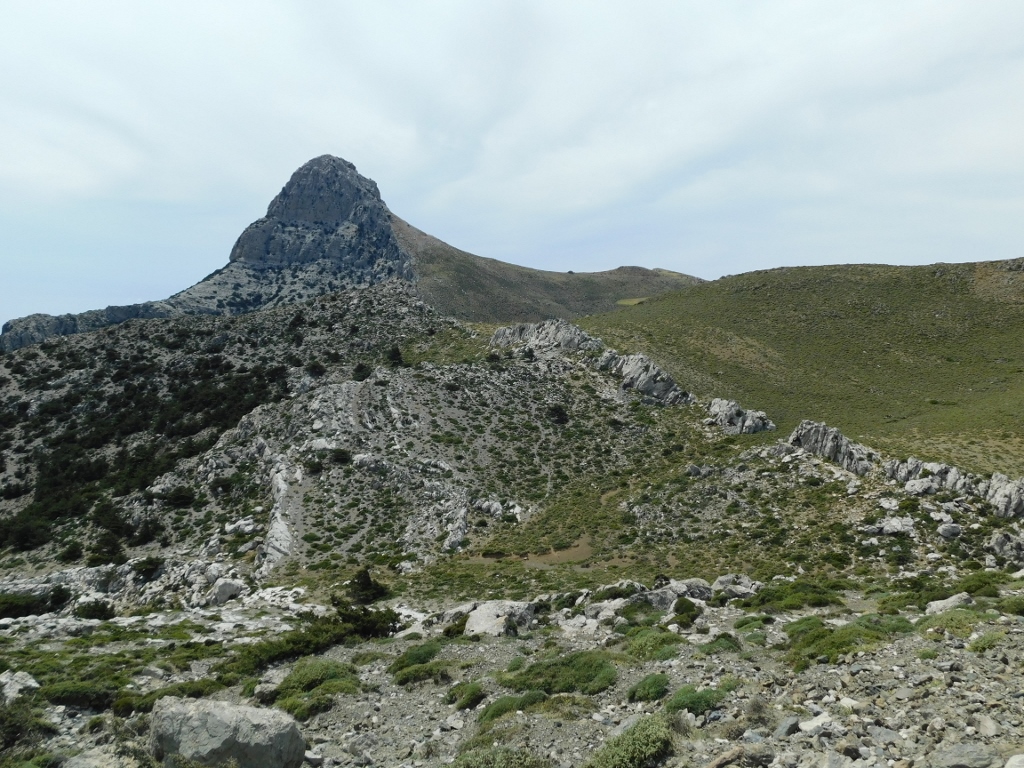 Asterousia Mountains, a detail
Asterousia Mountains, a detail
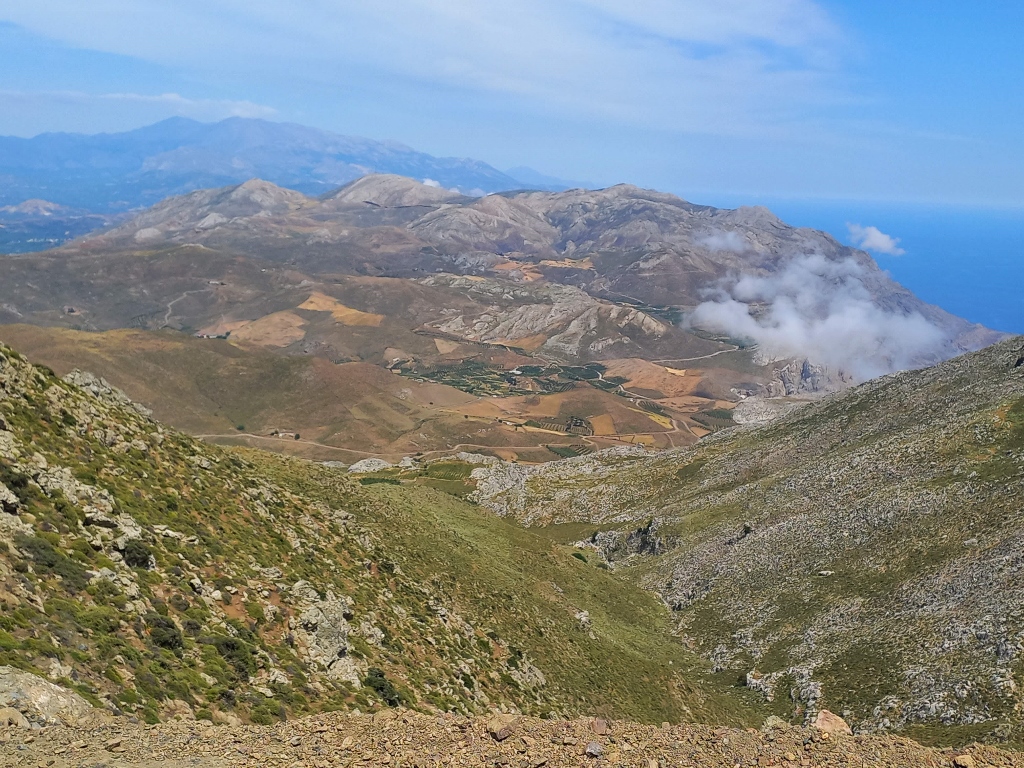 Asterousia Mountains, a detail
Asterousia Mountains, a detail
We gathered again at the previously mentioned clearing, or intersection, and from there, we started to observe the surroundings a bit. We still hoped that we might spot a bearded vulture here as well.
This place is in the middle of a small plateau called Sopata and, around us, we could see unexpectedly grassy and green fields.
 Asterousia Mountains, a detail
Asterousia Mountains, a detail
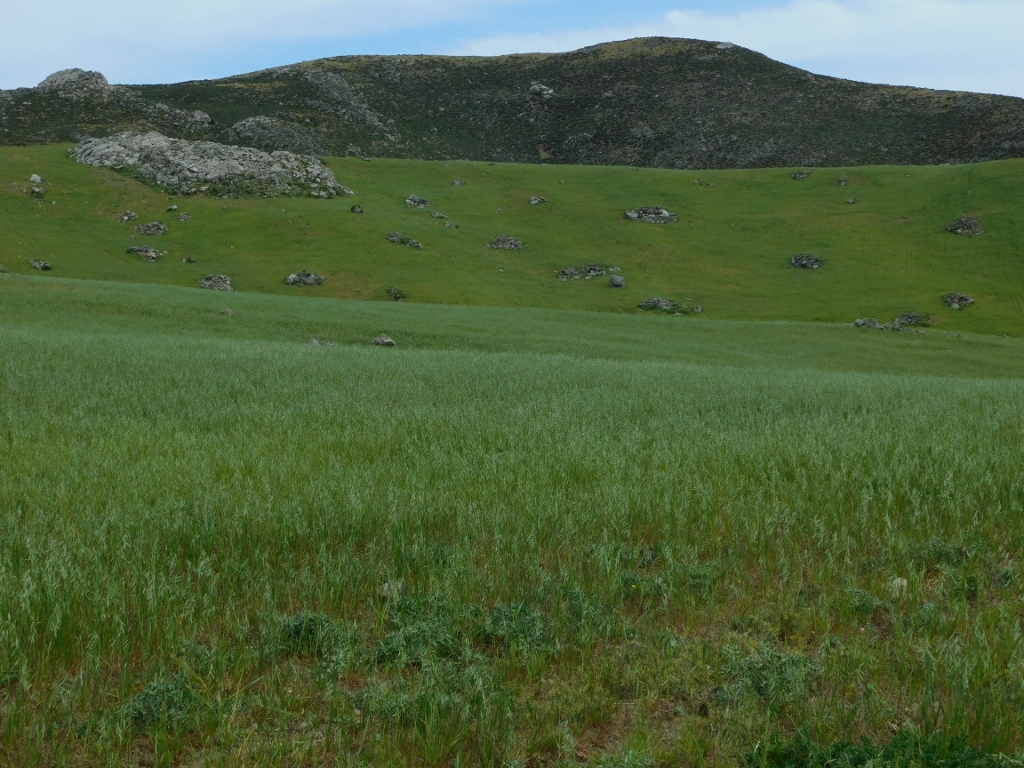 Asterousia Mountains, a detail
Asterousia Mountains, a detail
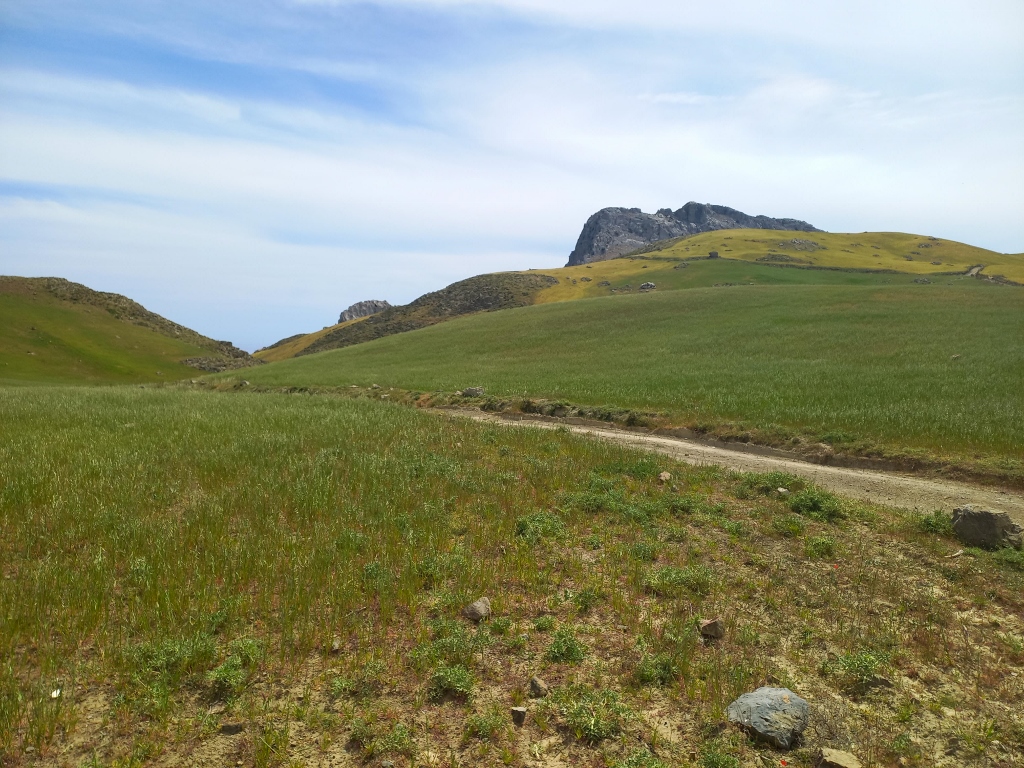 Asterousia Mountains, a detail
Asterousia Mountains, a detail
In addition, there’s a signboard placed here where you can read that the rocky parts of the Kofinas peak, visible from this vantage point, resemble a human profile. Well, with a little imagination, that is entirely possible.
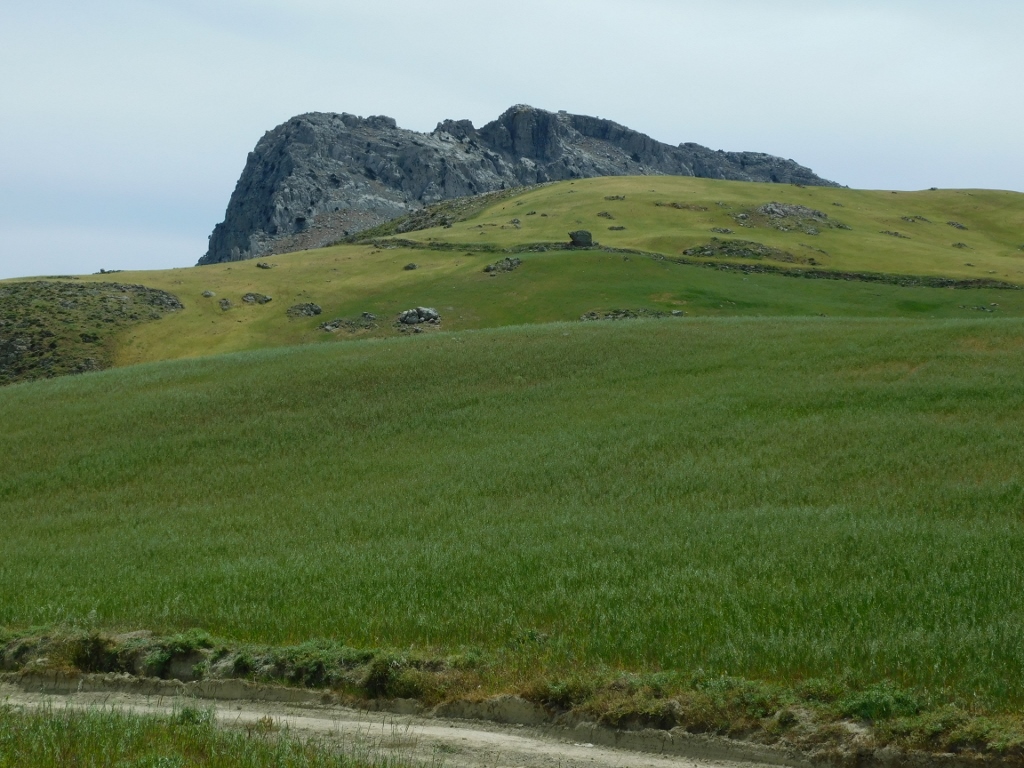 Asterousia Mountains, a detail
Asterousia Mountains, a detail
One of the roads leading from this clearing, seemingly heading towards the peak of Kofinas, was blocked by a wire fence, but we weren’t interested in going in that direction anyway. Instead, we took a stroll along another dirt road. From there, we could see the Messara Plain and one of the roads leading to this area.
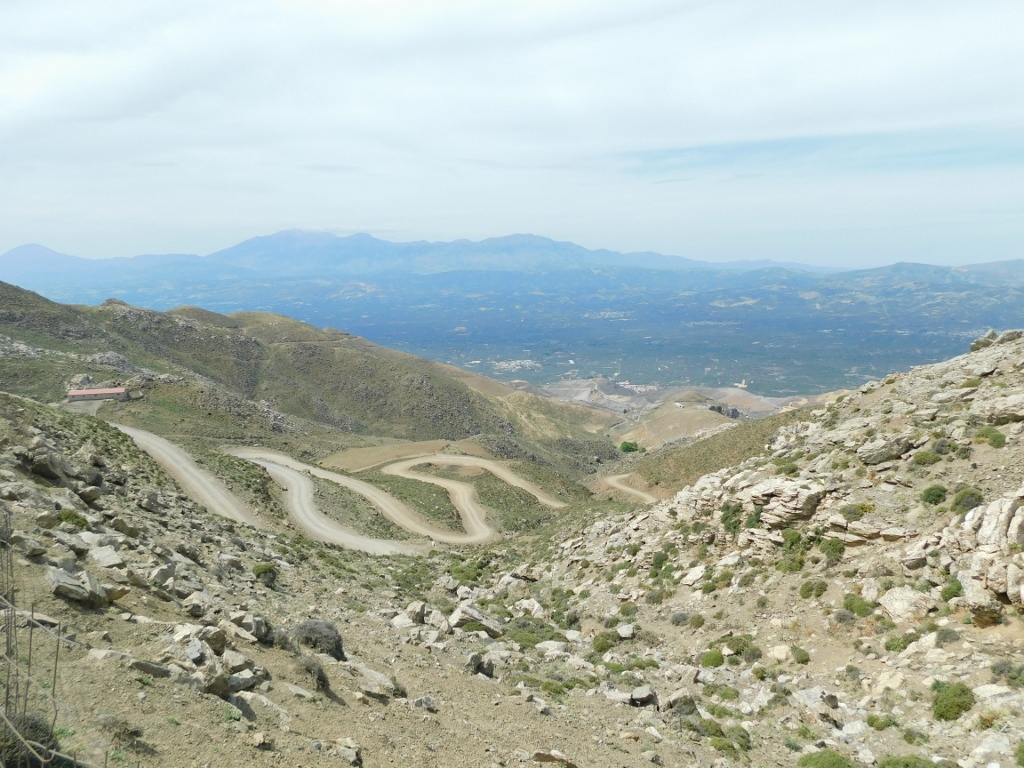 Asterousia Mountains, a detail
Asterousia Mountains, a detail
However, what was much more interesting to us was that near the structure visible on the left side of the previous photo, we spotted a whole flock of griffon vultures (Gyps fulvus). There were also a couple of common ravens (Corvus corax) present.
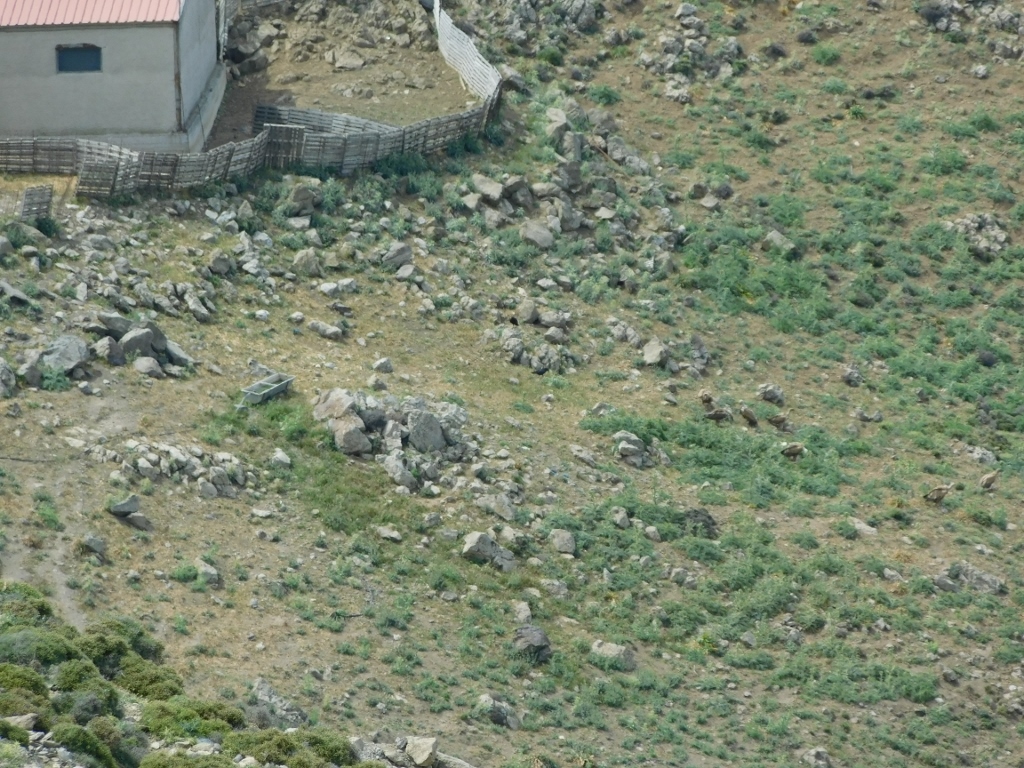 Griffon vultures
Griffon vultures
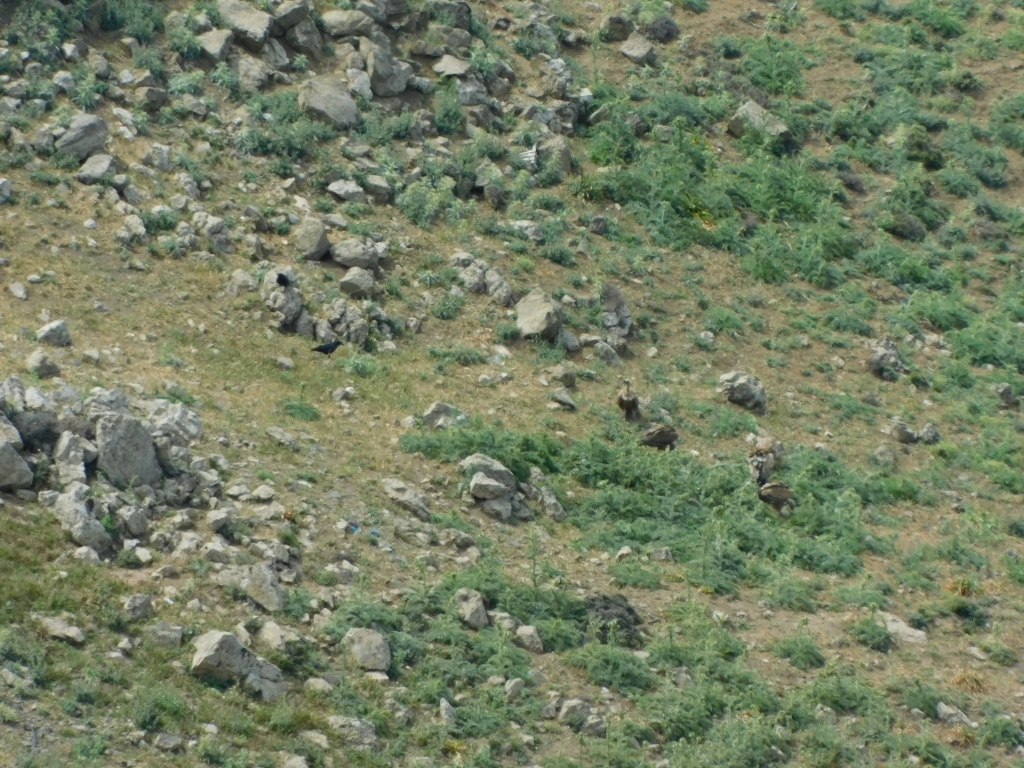 Griffon vultures (right) and ravens (left)
Griffon vultures (right) and ravens (left)
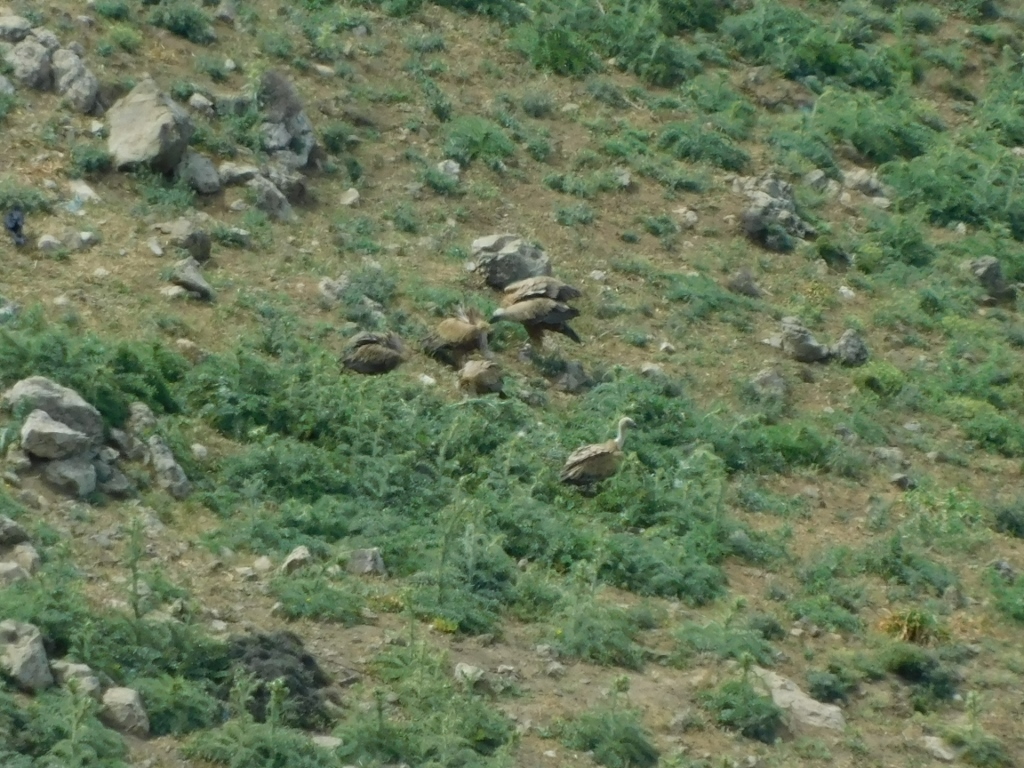 Griffon vultures
Griffon vultures
Although we didn’t see any bearded vultures here, I was still pleased because at least we saw some griffon vultures. After a while, we all got back into our cars and started heading back following the same dirt road we used to get here. I wasn’t in a hurry now and I even stopped at a couple of places, albeit very briefly.
Once in order to take a photo of the surrounding landscapes and another time because along with my fellow travellers, we spotted some birds. I even managed to take photos of one of them. We were hoping it might be an eagle or a falcon, but it turned out to be a raven.
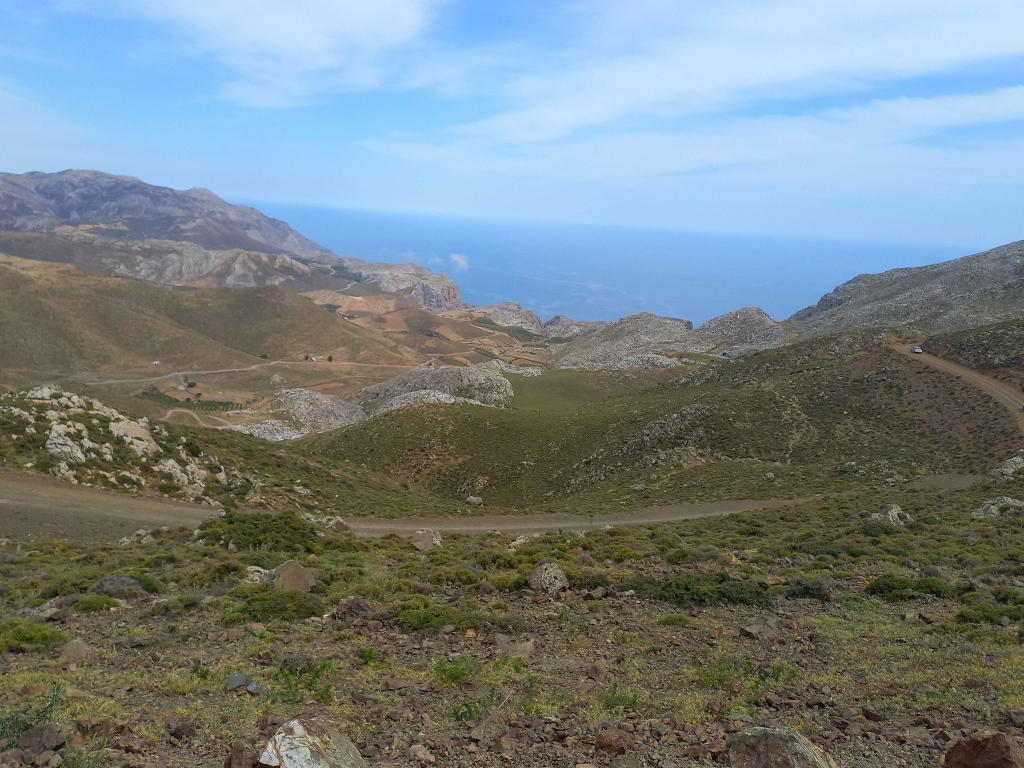 Asterousia Mountains, a detail
Asterousia Mountains, a detail
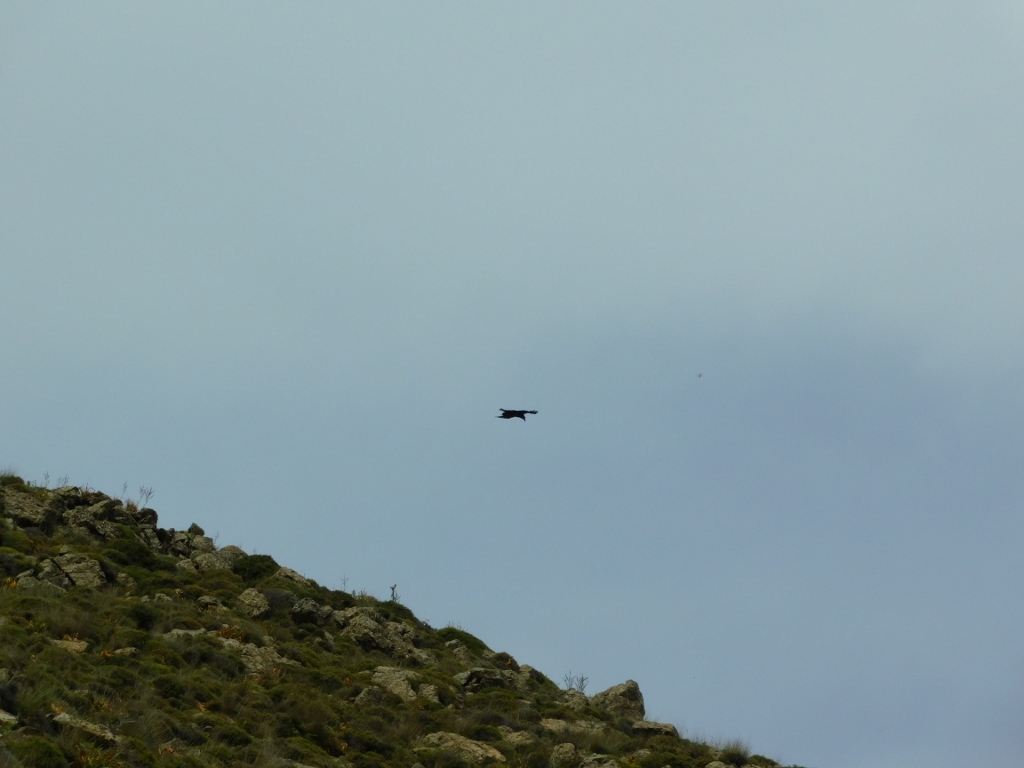 Raven
Raven
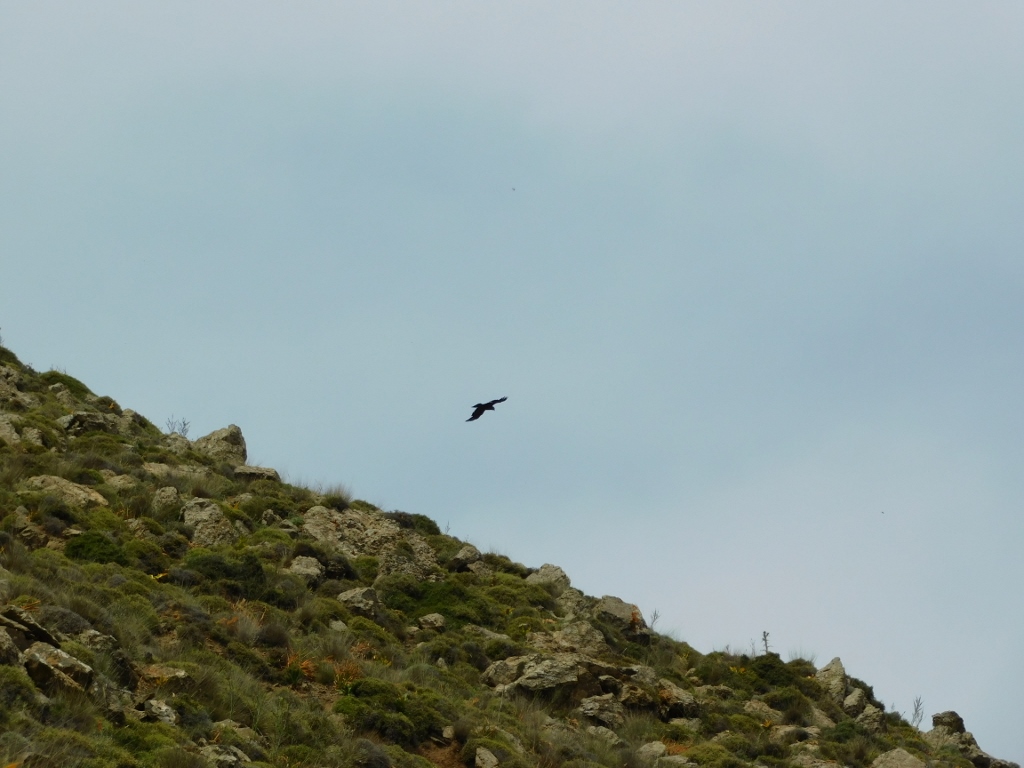 Raven
Raven
However, soon all three cars regrouped and then we all continued together towards the south, to the place called Tris Ekklisies, named after three churches that exist in this area.
As we descended towards this place on a very good road full of hairpin turns, which led over some very steep mountain slopes, the area partially reminded me of the Cinque Terre in Italy (see: https://www.svudapodji.com/en/italy-5/). On the other hand, when you arrive at Tris Ekklisies, you see that it is far from these charming and extremely popular Italian villages.
 Tris Ekklisies
Tris Ekklisies
Here, however, there is also a very beautiful beach, as well as several taverns, so we quickly settled into one and started ordering because we were all already hungry.
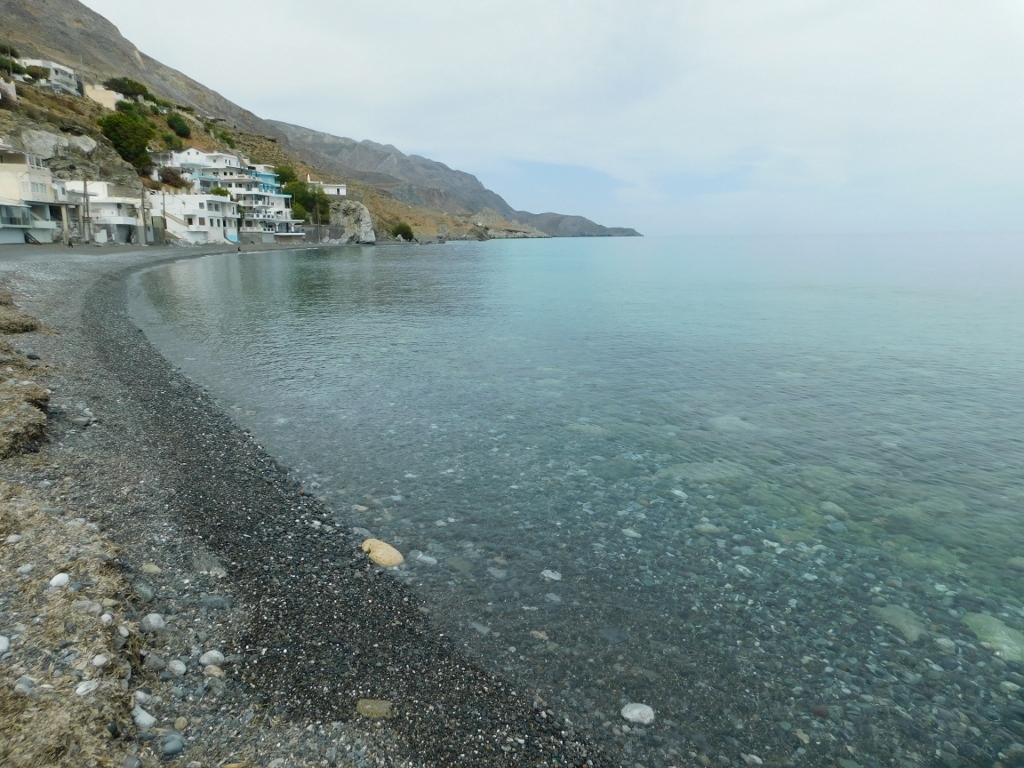 Beach in Tris Ekklisies village
Beach in Tris Ekklisies village
At one point, I walked to the nearby small Church of the Annunciation of the Theotokos, but it was closed.
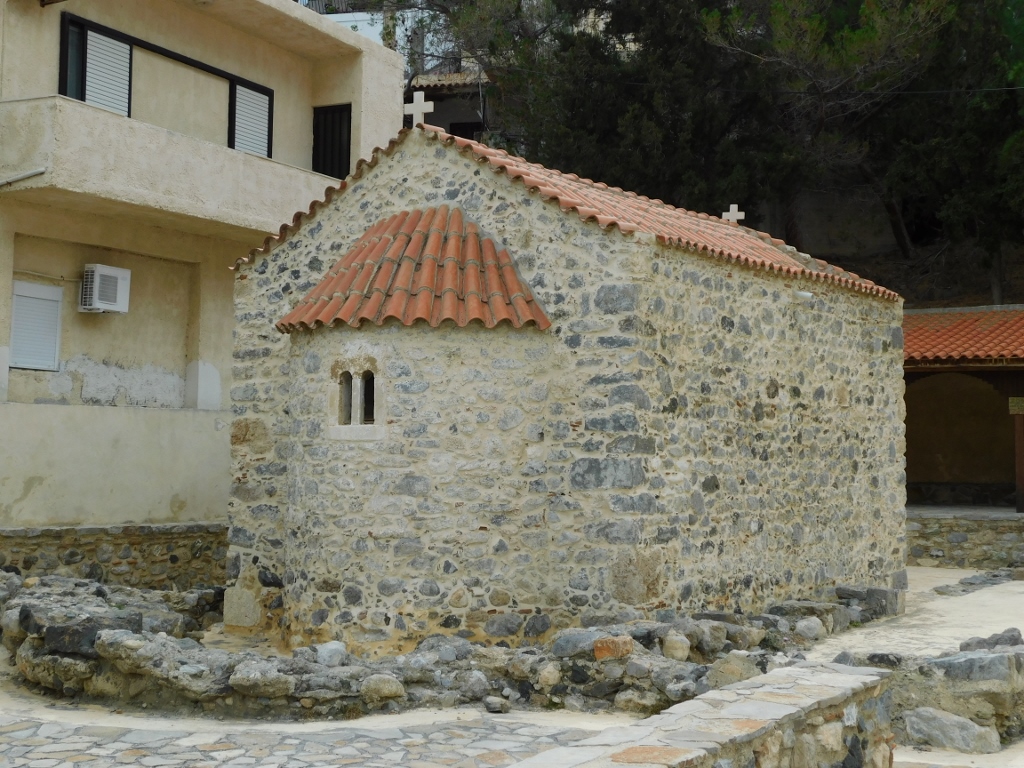 Church of the Annunciation of the Theotokos
Church of the Annunciation of the Theotokos
After the wonderful lunch, we all set off together, but the agreement was that everyone would return at their own pace. That suited me just fine. However, the adventures weren’t over yet. At one point, while passing through a village and following the navigation on my phone, I evidently made a wrong turn and found myself on a dirt road leading through olive groves and past vineyards. It wasn’t a problem at all, especially after the journey through the Asterousia Mountains, and the three of us, Beba, Sonja and I, giggled heartily, especially with Sonja’s witty comments.
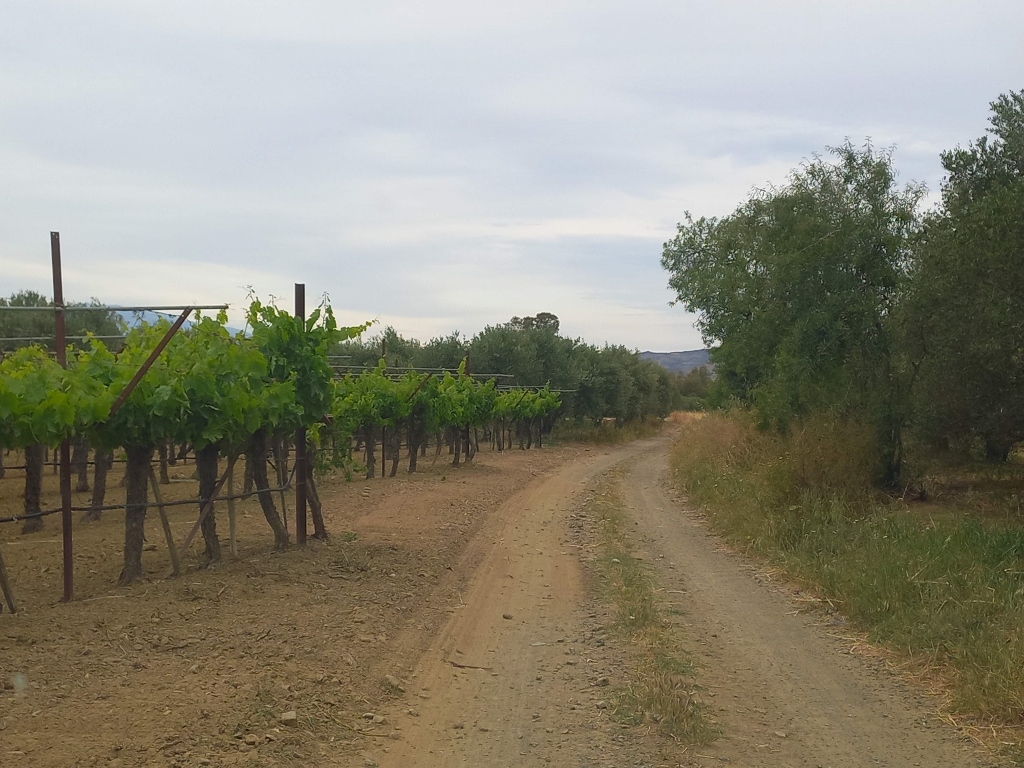 You can go along this road as well
You can go along this road as well
Soon, we returned to the main asphalt road and continued on until we reached Malia again.
The next day was our last full day in Crete and in the end we decided it would be a completely free day for everyone to plan what they wanted to do, with a general consensus that this day would mainly be dedicated to Heraklion.
Since Beba and Sonja were interested in visiting Knossos, where I had already been but was very happy to go again, and the initial idea was that perhaps we would all go to another birdwatching site during the day, it was necessary to start earlier in the morning. So, the three of us, joined by Vuk, agreed to leave from Malia before the others, which we did.
So, I visited the site of the Knossos Palace in 2022, about which I’ve already written (see: https://www.svudapodji.com/en/crete-1/), but at that time, I didn’t manage to see parts of the King’s Megaron where the walls are decorated with images of double axes. I wanted to see this because it is believed that the word “labyrinth” and the name for the ancient Labyrinth where the Minotaur lived originated from the word for double axe.
I must say that even now, I didn’t succeed in spotting those double axes, while clear data about the exact location of these axes and whether they can be seen today are not readily available on the internet (for us regular folks, as experts surely have their “insider” information). In other words, I won’t be going to the Knossos Palace for a third time.
But that didn’t dampen my mood at all and I happily toured the site with our small group. I even saw parts of the King’s Megaron that had been restored and opened to the public since my last visit.
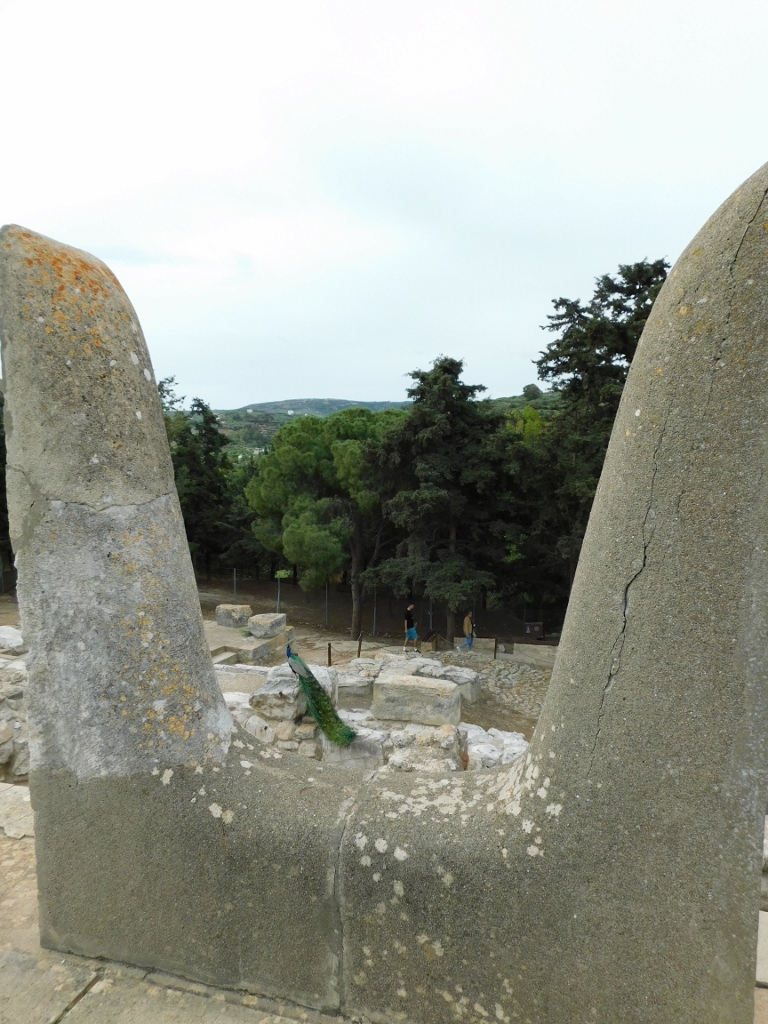 “Horns of Consecration”
“Horns of Consecration”
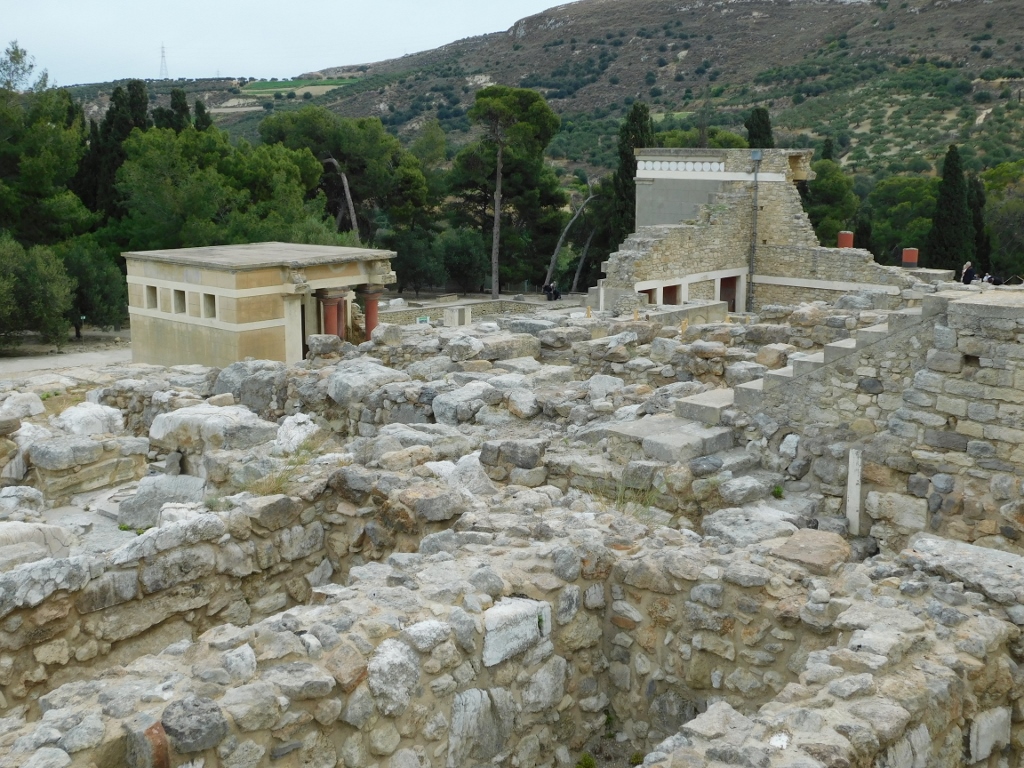 Knossos Palace, a detail
Knossos Palace, a detail
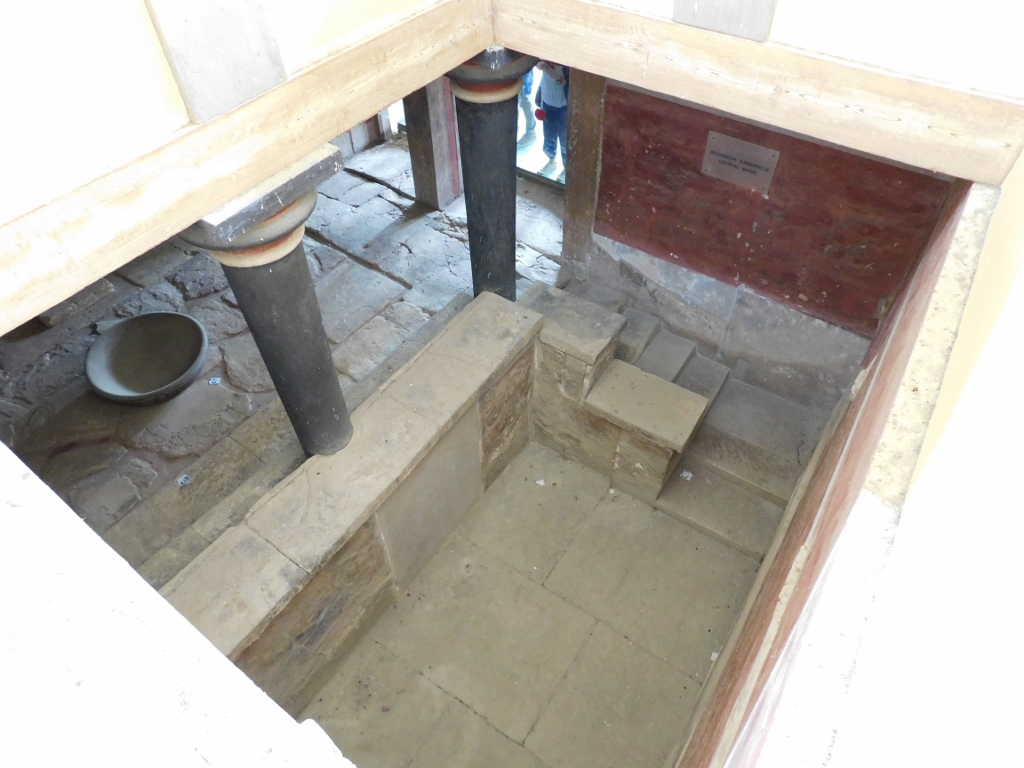 Knossos Palace, a detail
Knossos Palace, a detail
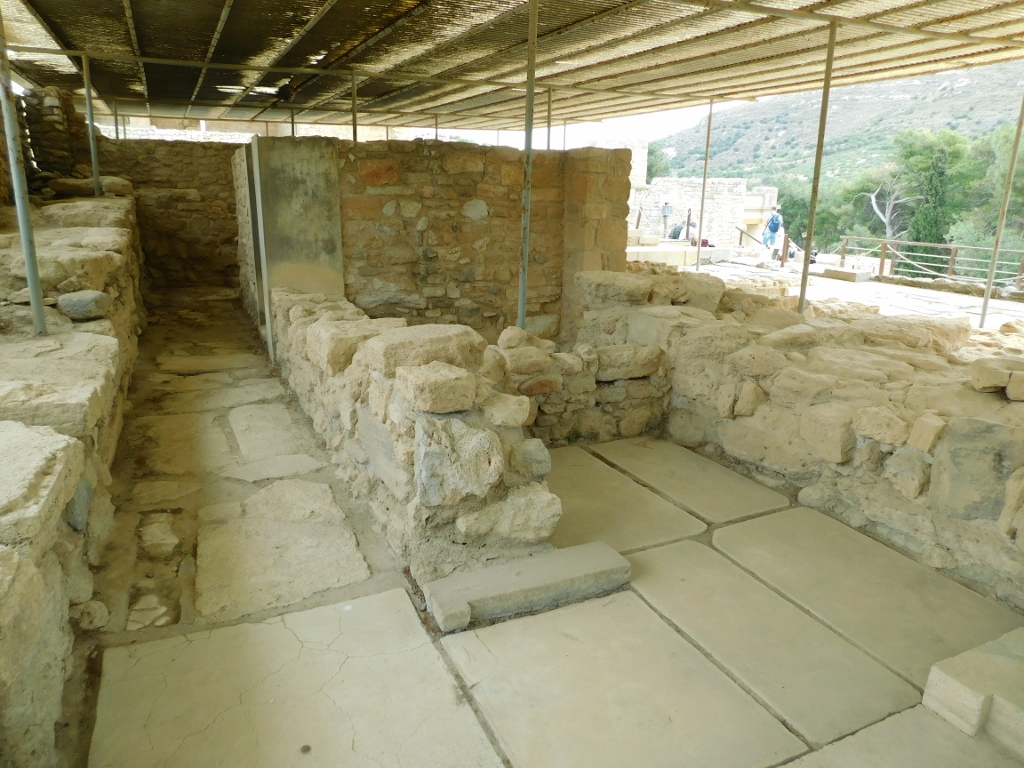 Shrine of the Double Axes
Shrine of the Double Axes
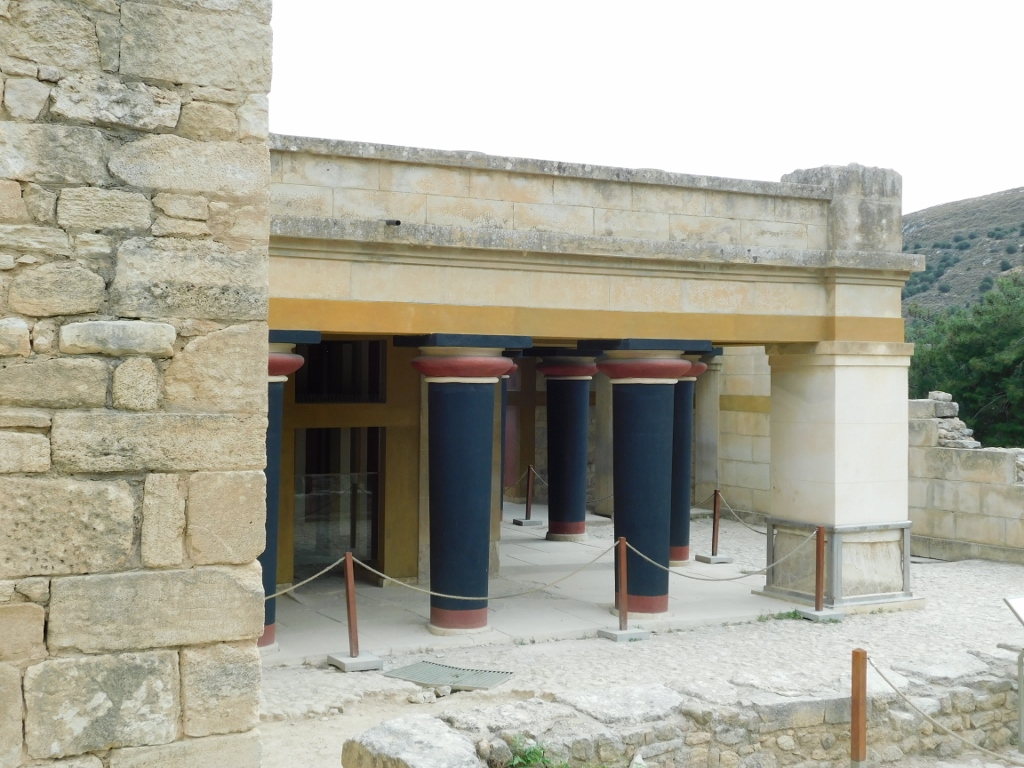 King’s Megaron or the Hall of the Double Axes
King’s Megaron or the Hall of the Double Axes
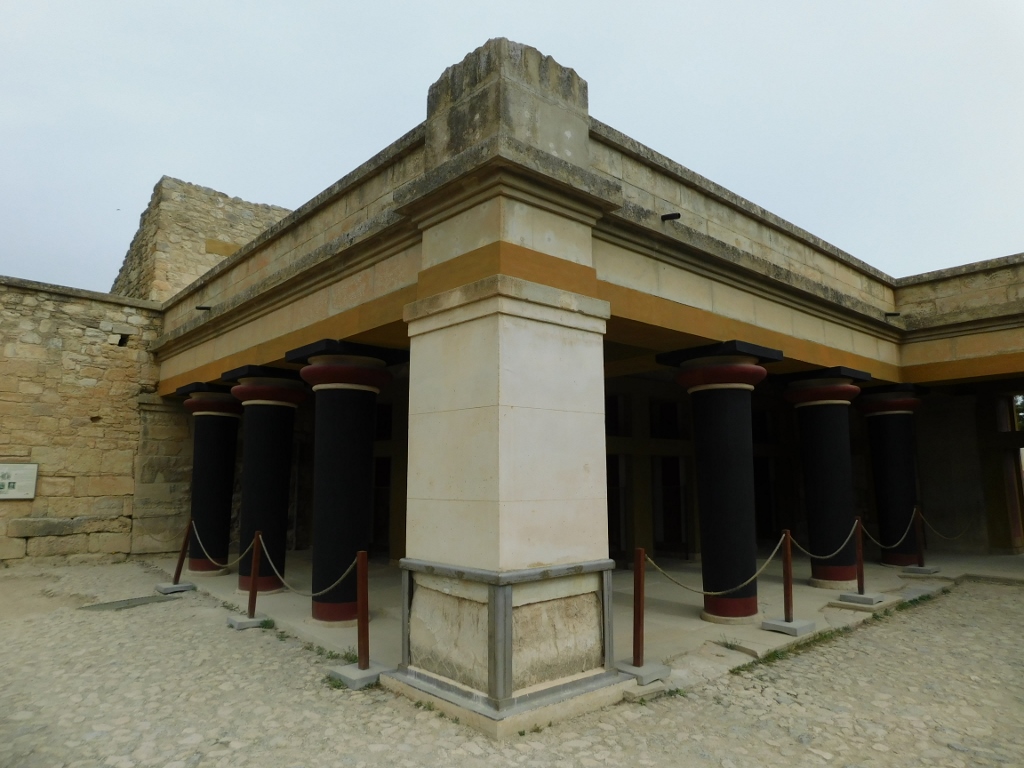 King’s Megaron or the Hall of the Double Axes
King’s Megaron or the Hall of the Double Axes
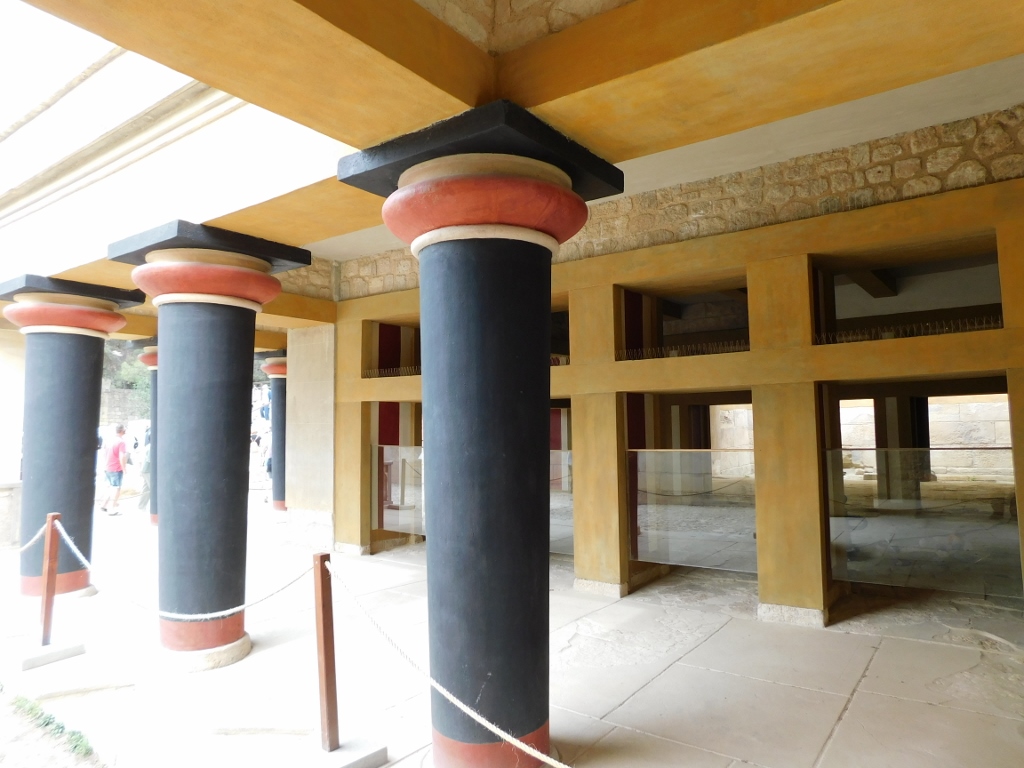 King’s Megaron or the Hall of the Double Axes
King’s Megaron or the Hall of the Double Axes
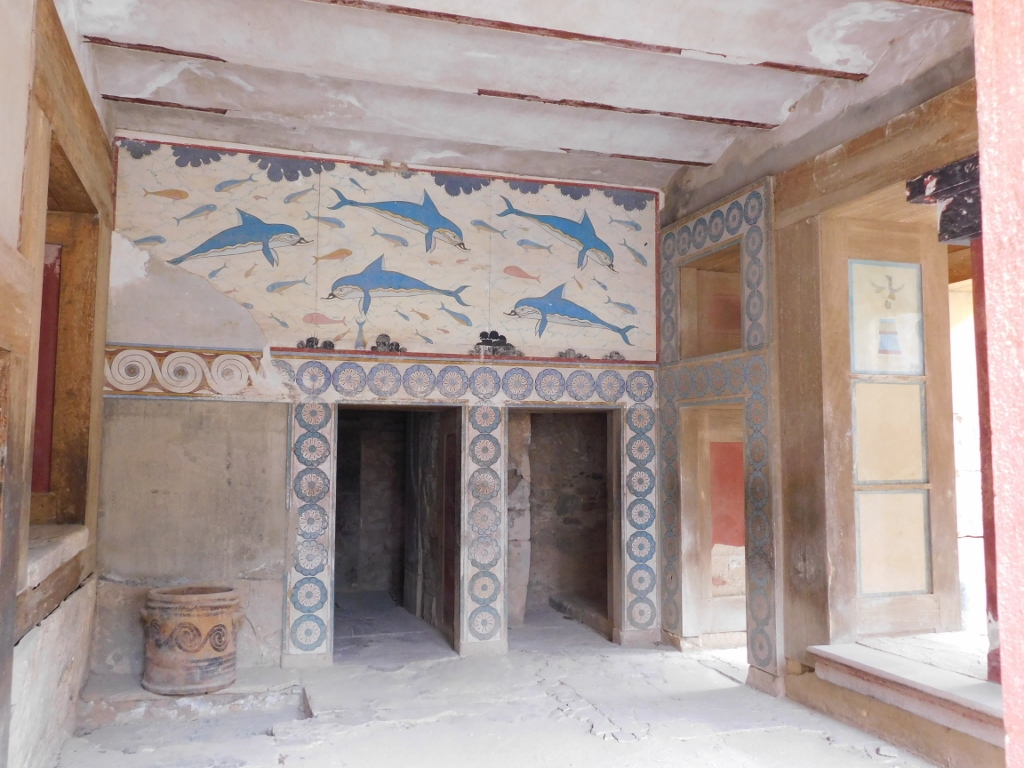 Queen’s Megaron
Queen’s Megaron
But besides exploring different parts of the palace, I also spotted and took photos of a couple of bird species. They were barn swallows (Hirundo rustica) and a pair of Italian sparrows (Passer italiae).
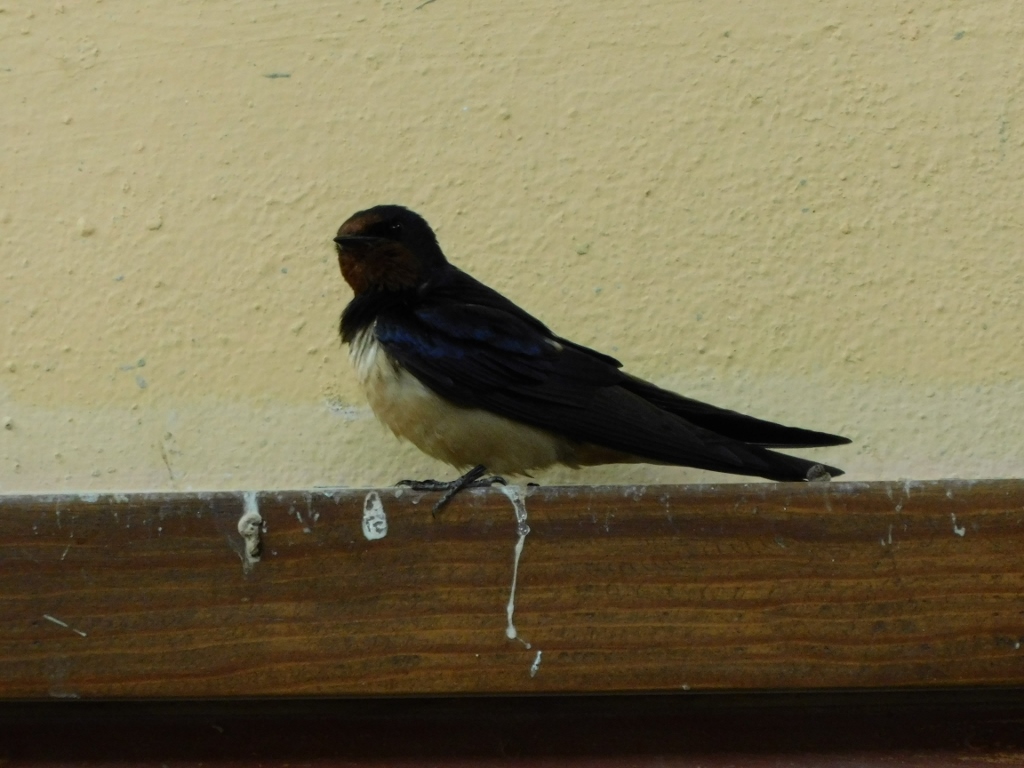 Barn swallow
Barn swallow
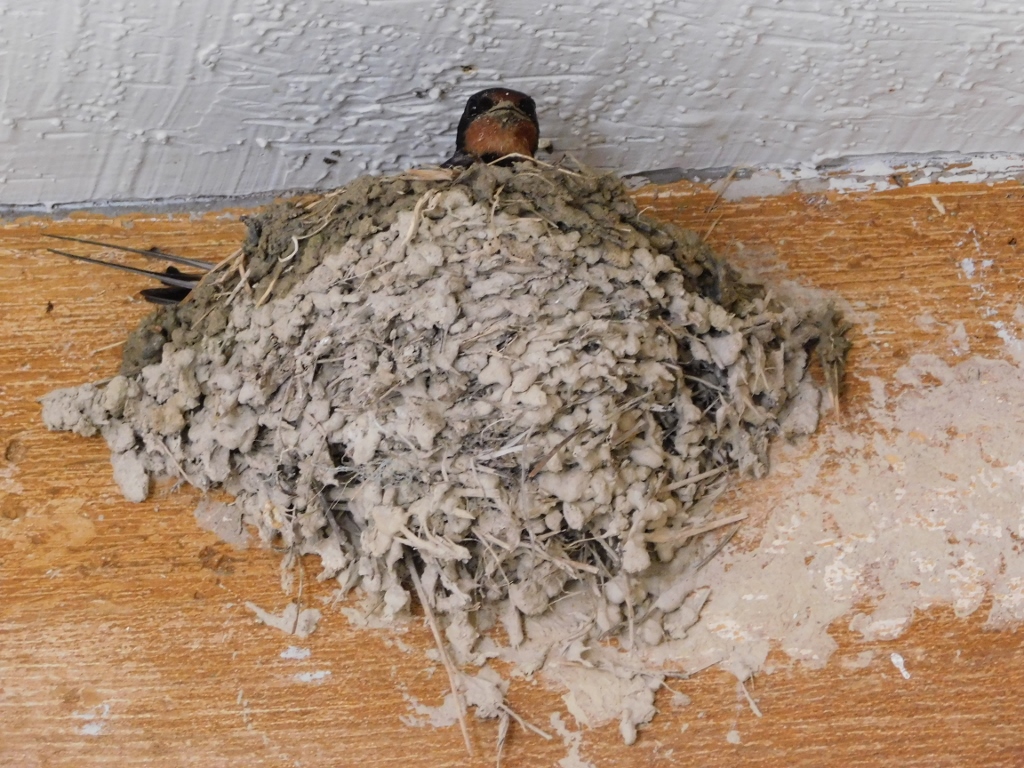 Barn swallow
Barn swallow
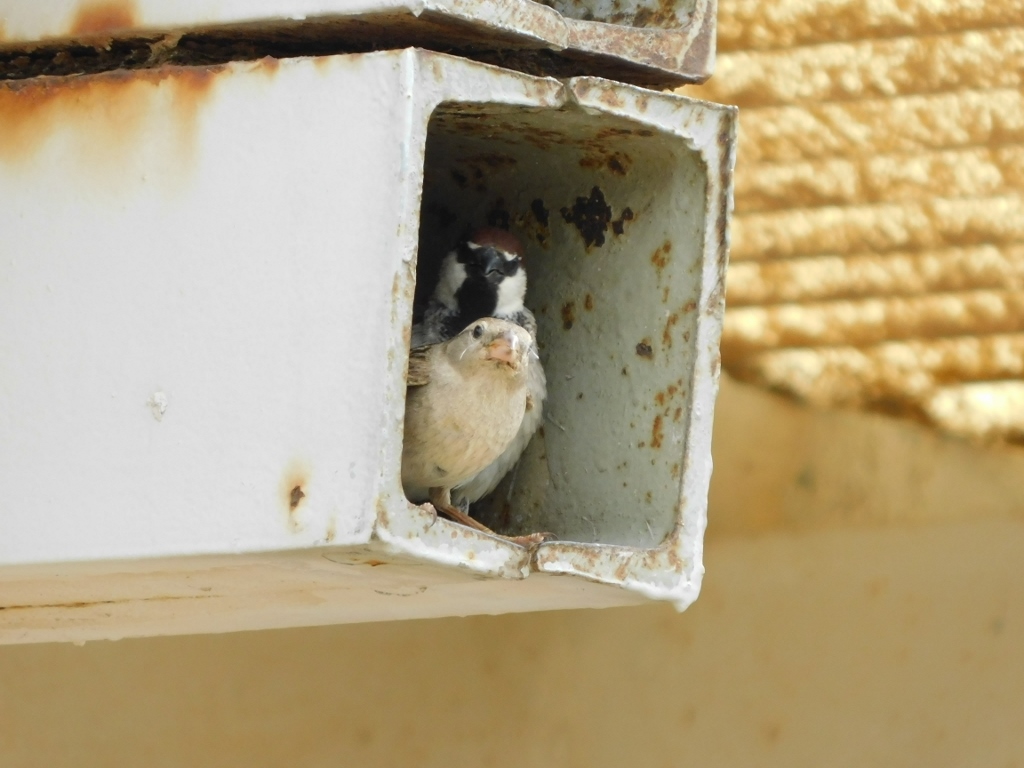 Italian sparrow couple
Italian sparrow couple
When we finished exploring the palace in Knossos, we drove to the centre of Heraklion and parked our car there. First, we all went for coffee and refreshments together. Then, Sonja, Beba and Vuk went to the Heraklion Archaeological Museum, while I sat down in one of the many lovely cafés in the city to wait for them. I had already thoroughly visited the museum two years earlier, so I preferred to relax and enjoy the beautiful day. On the other hand, I was glad that the members of my group wanted to visit the museum, as it is outstanding (see: https://www.svudapodji.com/en/crete-4/).
As it turned out, the three of them met a few more members of our group at the museum, so Vuk “left” us and joined that other small group. However, this didn’t hinder Sonja, Beba and me from later taking a walk together in Heraklion, with the specific goal of visiting another museum. Along the way, we passed by the Church of Saint Peter, which was built during the period of Venetian rule over Crete, between 1248 and 1253.
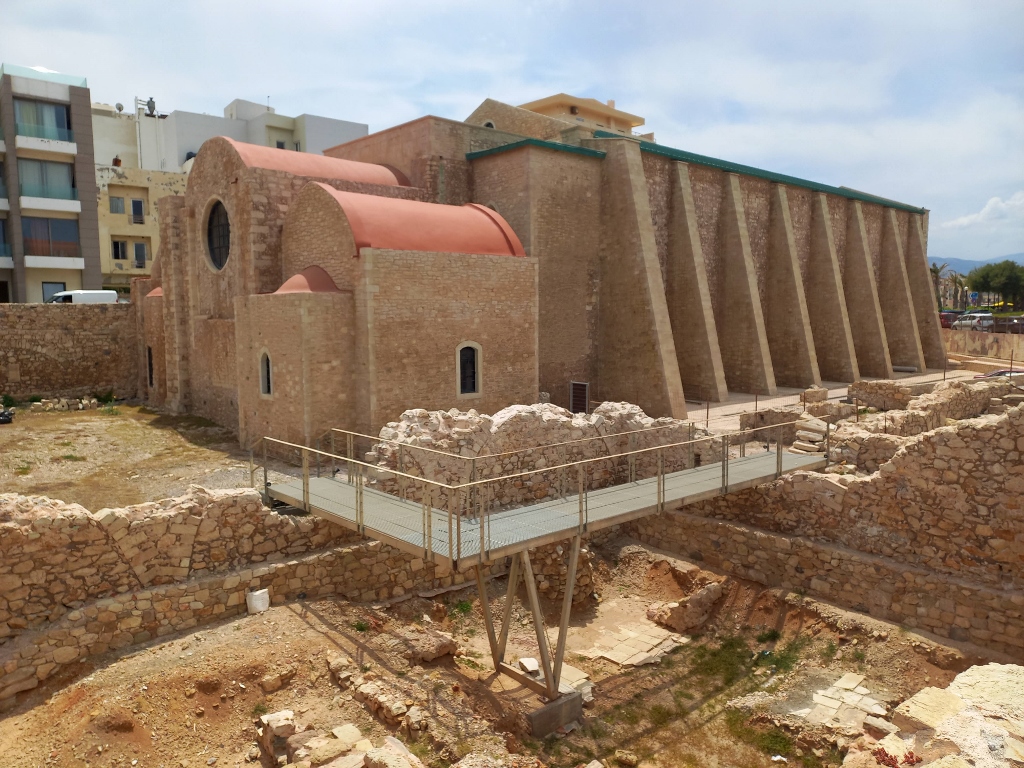 Church of Saint Peter
Church of Saint Peter
As for our main destination, this time it was the Natural History Museum of Crete. The museum isn’t very large, but it is exceptionally well-designed and imaginative. There are features like an earthquake simulator, moving dinosaur figures and many other interesting exhibits.
However, what I enjoyed a lot was taking photos of some live animals that can be seen in the thoughtfully designed spaces.
For example, an endlessly adorable and cute pair of Mongolian gerbils (Meriones unguiculatus) – you simply can't help but wish to have them as pets.
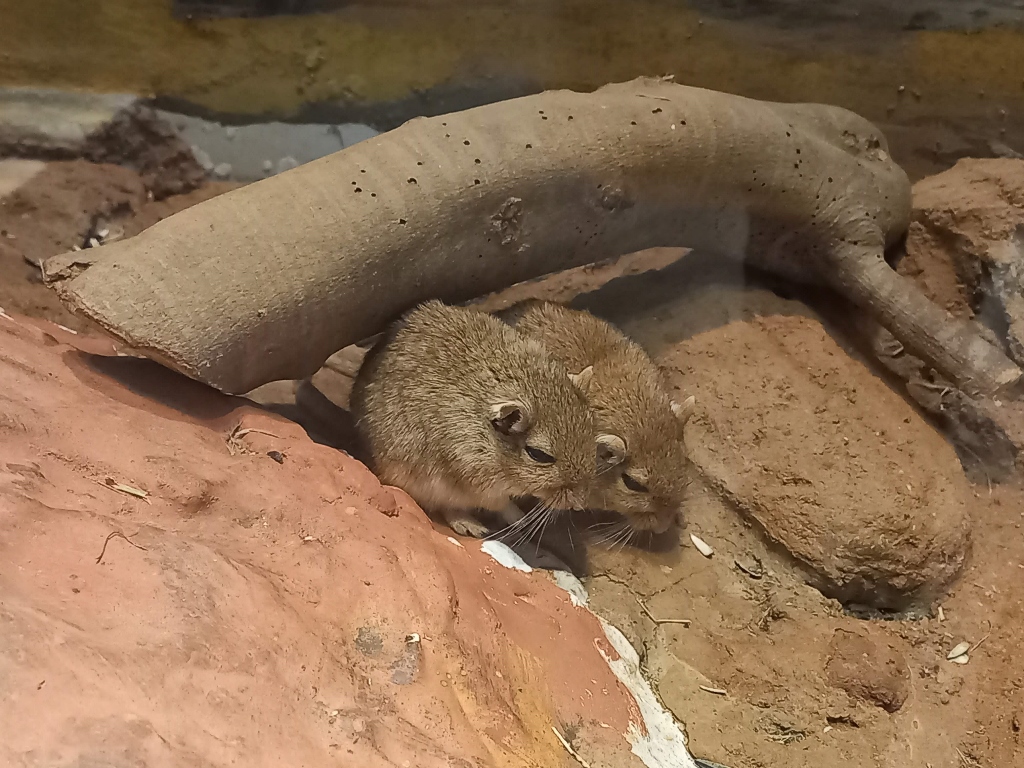 Mongolian gerbils
Mongolian gerbils
Here, you can also see animals that didn’t inspire me in the least to pet or play with them, but they were no less fascinating. For instance, a very venomous Saharan horned viper (Cerastes cerastes) that has two horns. I even filmed it in video format.
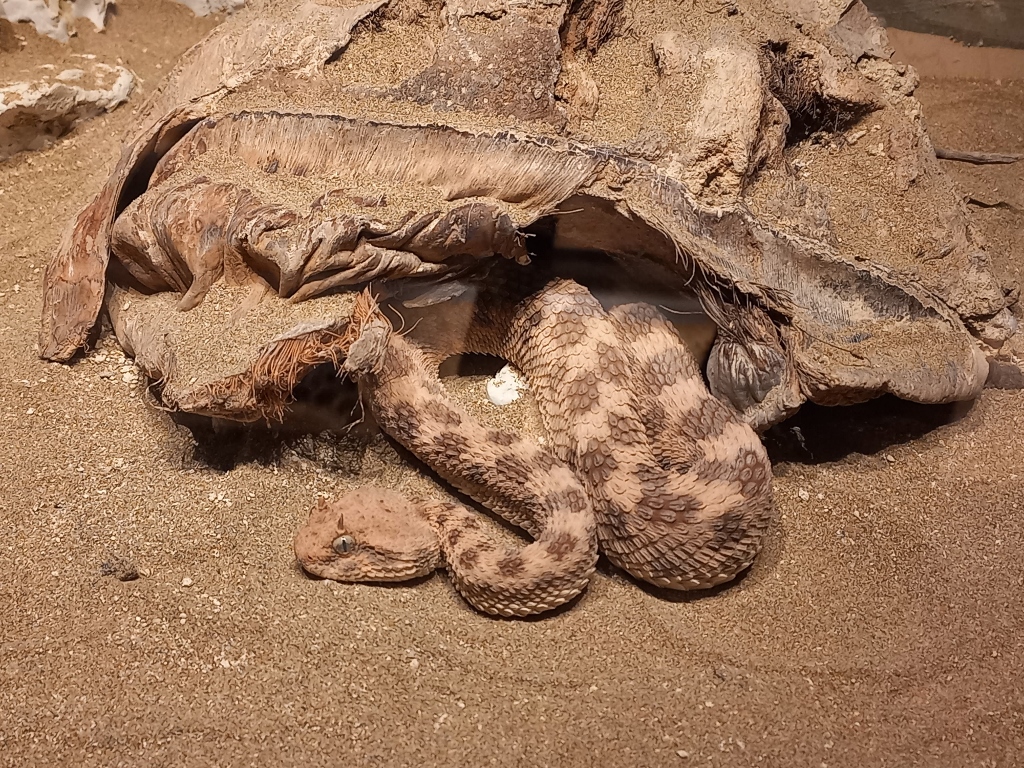 Saharan horned viper
Saharan horned viper
There was also a nose-horned viper (Vipera ammodytes) that had evidently shed its skin at some point.
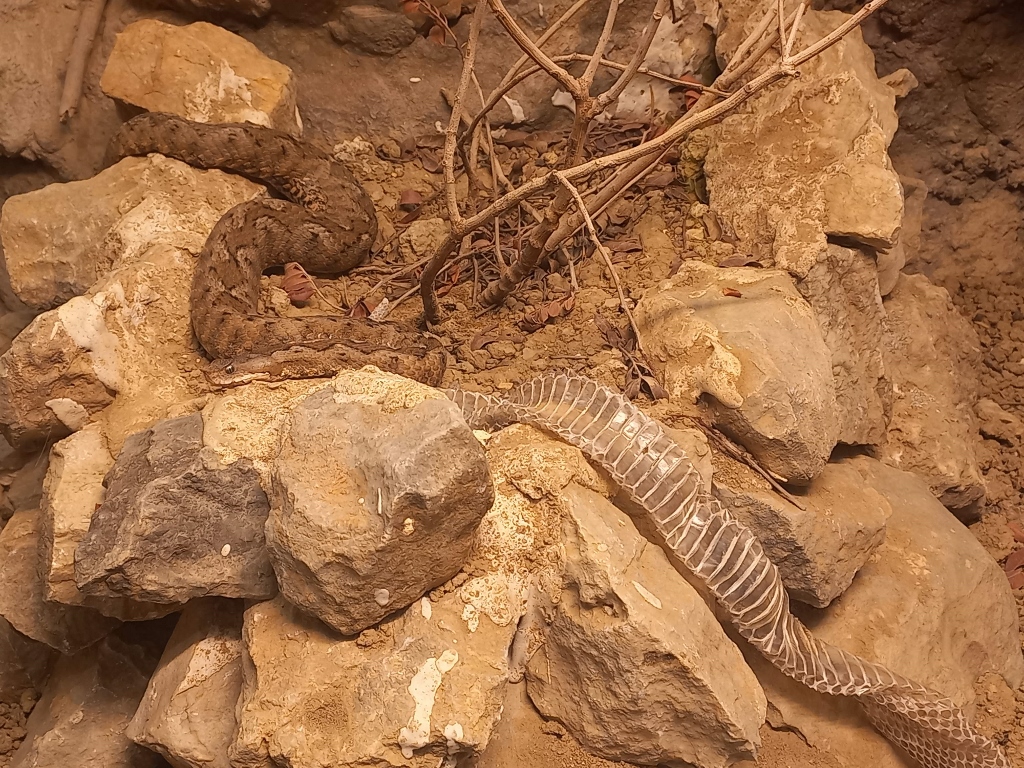 Nose-horned viper
Nose-horned viper
Although it doesn’t inhabit Crete itself, the nose-horned viper, a highly venomous snake species, is quite widespread throughout Greece and the Balkans. Coincidentally, when I went with “my birders” to the Uvac River Canyon, Serbia, in September 2023 to observe griffon vultures, during a boat ride on Lake Radoinja, we spotted a nose-horned viper swimming to cross from one side of the canyon to the other. I managed to take a photo of it in a way that its horn was clearly visible.
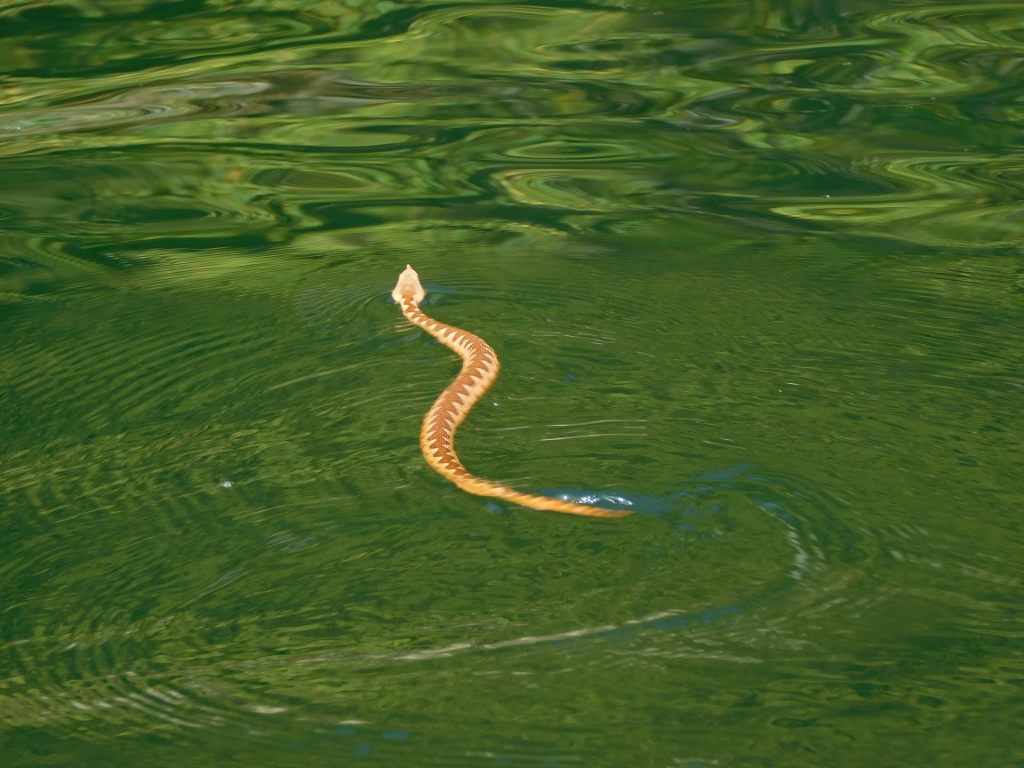 Nose-horned viper in the Uvac canyon
Nose-horned viper in the Uvac canyon
Here, I saw another Balkan green lizard (Lacerta trilineata) once again.
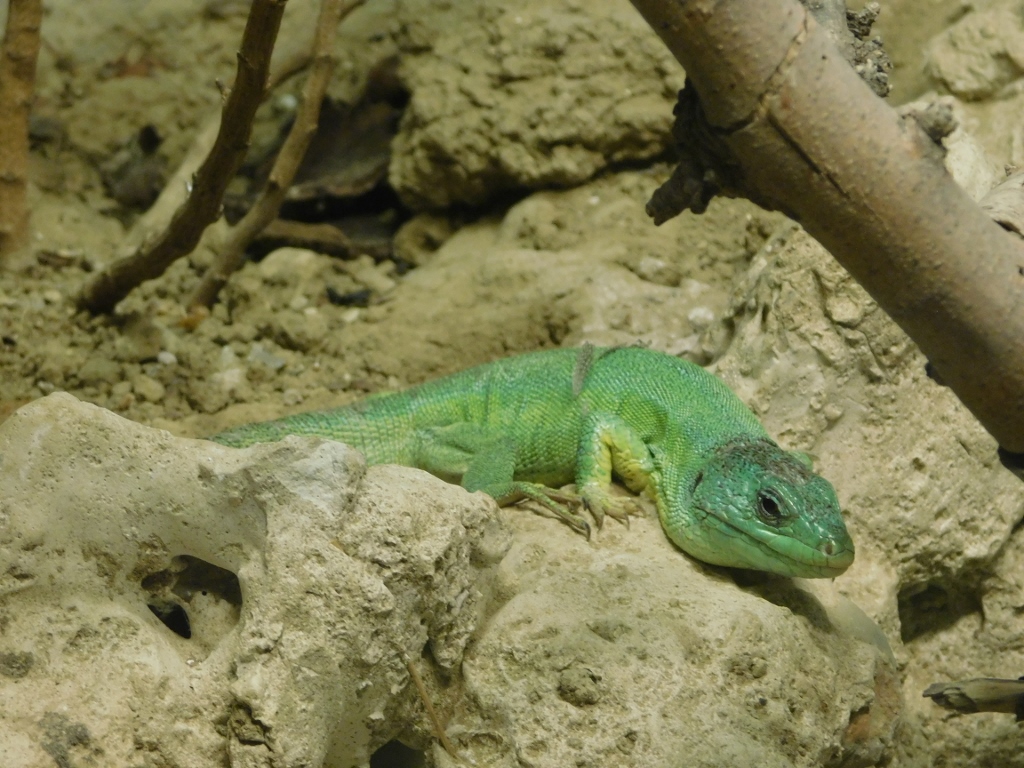 Balkan green lizard
Balkan green lizard
But the most fun I had was when I visited the section of the museum dedicated to birds, where a short film about birds of prey was playing on a monitor. That is how I managed to take a photo of a bearded vulture (Gypaetus barbatus) “up close” and immediately I came up with how I would joke with Saša later. So, when I shared the photo within the group, I added a comment saying that this is the proof that sooner or later, without doing anything, I would manage to capture a bearded vulture up close.
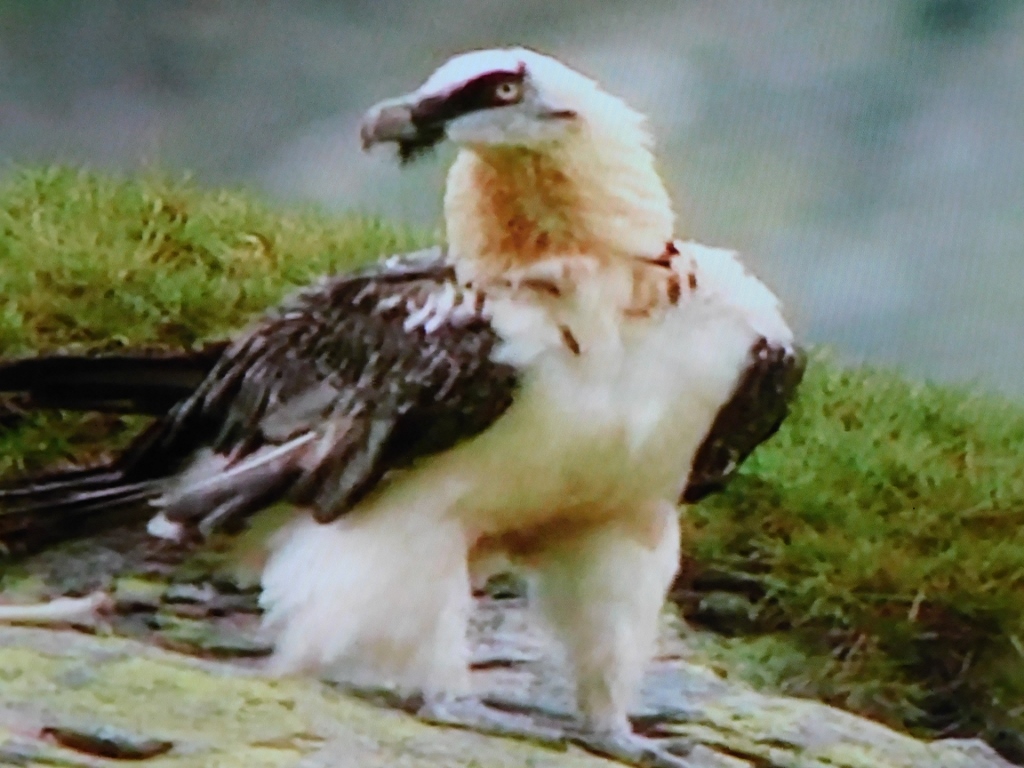 Bearded vulture
Bearded vulture
After visiting the Natural History Museum of Crete, Sonja, Beba and I continued our stroll through Heraklion by heading to the city centre. Soon, we settled into one of the numerous restaurants and enjoyed a nice meal. I was particularly delighted that I could finally have a beer, almost in the middle of the day and certainly between two car rides. Of course, it was non-alcoholic beer.
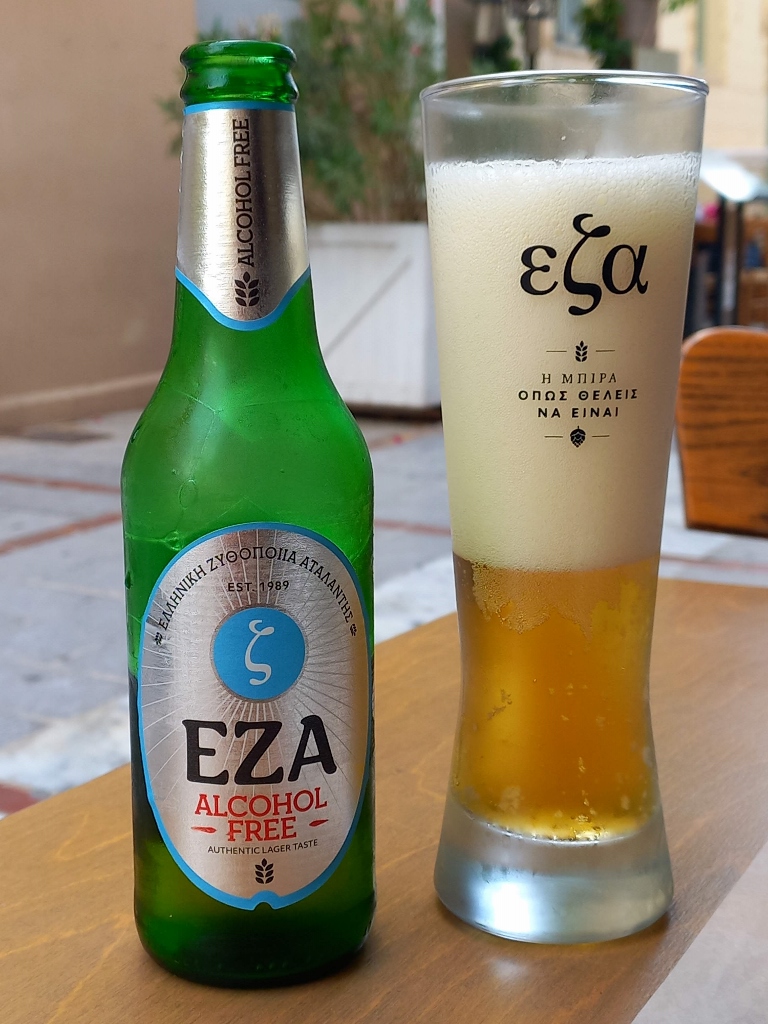 Beer in Heraklion
Beer in Heraklion
The next day we returned to Belgrade and Serbia. This was truly a wonderful trip. I find Crete to be an exceptionally beautiful island and besides revisiting some places I had been to in 2022, I also went to other places that would have remained distant and unknown to me without this group of bird enthusiasts. In addition to seeing numerous interesting species, each of us according to our knowledge and skills, I particularly enjoyed throughout the trip being in the company of great people.
And now let me share once again the map that illustrates where I travelled during this journey around Crete: